DAY 1
The morning we were going to start the trip had finally arrived. Feelings of anxiety hit me like a truck as we started getting all of our things together. Seeing our piles of gear and wrapped-up bicycles all together made me realize how much stuff we were trying to bring with us. It took us nearly three trips each to move all of our gear from the hostel out to the street as we waited for our Uber. Doubt slowly started to creep in as I wondered not only if we would be able to make it, but if what we were trying to do was downright dangerous.
We knew of a few other cyclists who had done a similar trip before us, but most did a 200km section over about 10 days and we wanted to do 500km over about a month. They all had done it on hardshell kayaks with no bicycle and very minimal weight while we were doing it on inflatable kayaks with bicycles and a ton of extra weight. I’m all for ambitiously heading into the unknown, but the line between bravery and stupidity can be blurry. I knew that bringing the bike wasn’t really smart, I just liked the idea of it. I had traveled over a year with my bicycle and it had taken me further than I could have imagined. It felt wrong to send the bicycle ahead and to travel without it.
The Uber arrived and we somehow managed to stuff all of our gear into the trunk, taking up the entire trunk and back seat. We hopped in the car and headed to the start location, a bridge in a small village where I’m pretty sure there was a spot to access the river. While in the car, I got the contact of a local guy, Diego, who owns a kayak shop in Panama City from a friend who had kayaked a similar route. Diego had helped others plan large kayaking trips so he would know what we should expect. Even though it was pretty last minute as we were already on the way to start, I thought maybe he could have some good information to calm my nerves.
I was wrong. He told us everything we were doing and how we were doing it was wrong and dangerous. We were planning to paddle through a small section of the Panama Canal and he told us to do that, we had to get special permission and without it, we would likely get kicked out by the police. He said we were doing it during the most dangerous time of the year weather-wise. There would be relentless strong headwinds and large waves. He told us doing it on inflatable kayaks was very risky and we would likely get punctures. The area we were kayaking was covered in sharp coral reefs and rocky coastlines. Once he heard that we were also bringing bicycles and extra gear, he tried very hard to convince us to rethink it. Little did he know we were about 20 minutes from starting.
Surprisingly, his warnings didn’t scare me that much more. I had a strange amount of faith in these inflatable kayaks. My main worry was all the extra weight and lack of space due to the bicycle and the extra gear. The extra weight would make the chance of catastrophe much higher in the ocean, it gave us very little room to be comfortable, and lastly, it made moving our kayaks and gear out of the water extremely time-consuming.
I should also mention that while I was pretty stressed and worried, Kacper maintained an unwavering sense of confidence. He knew of the risks and problems, but he knew that no matter what, we would figure it out and make it. We made a pretty good team. He had all the ambitious ideas, and I helped figure them out and plan them. When I was unconfident and feeling unable to continue, he gave me the confidence to keep going. There are not many other people I would have wanted to do this trip with.

We finally arrived at the river. The excitement started taking over as it was time to get on the water. We spent nearly 30 minutes unloading the car and then going back and forth, moving our gear to the river bank.

Another 30 minutes later the kayaks were loaded up. I felt so much better now than earlier this morning. The river was beautiful and it would be an easy ride and a great start to the trip. I still had some fears about the challenges the ocean would bring… Thankfully we were a few days away.

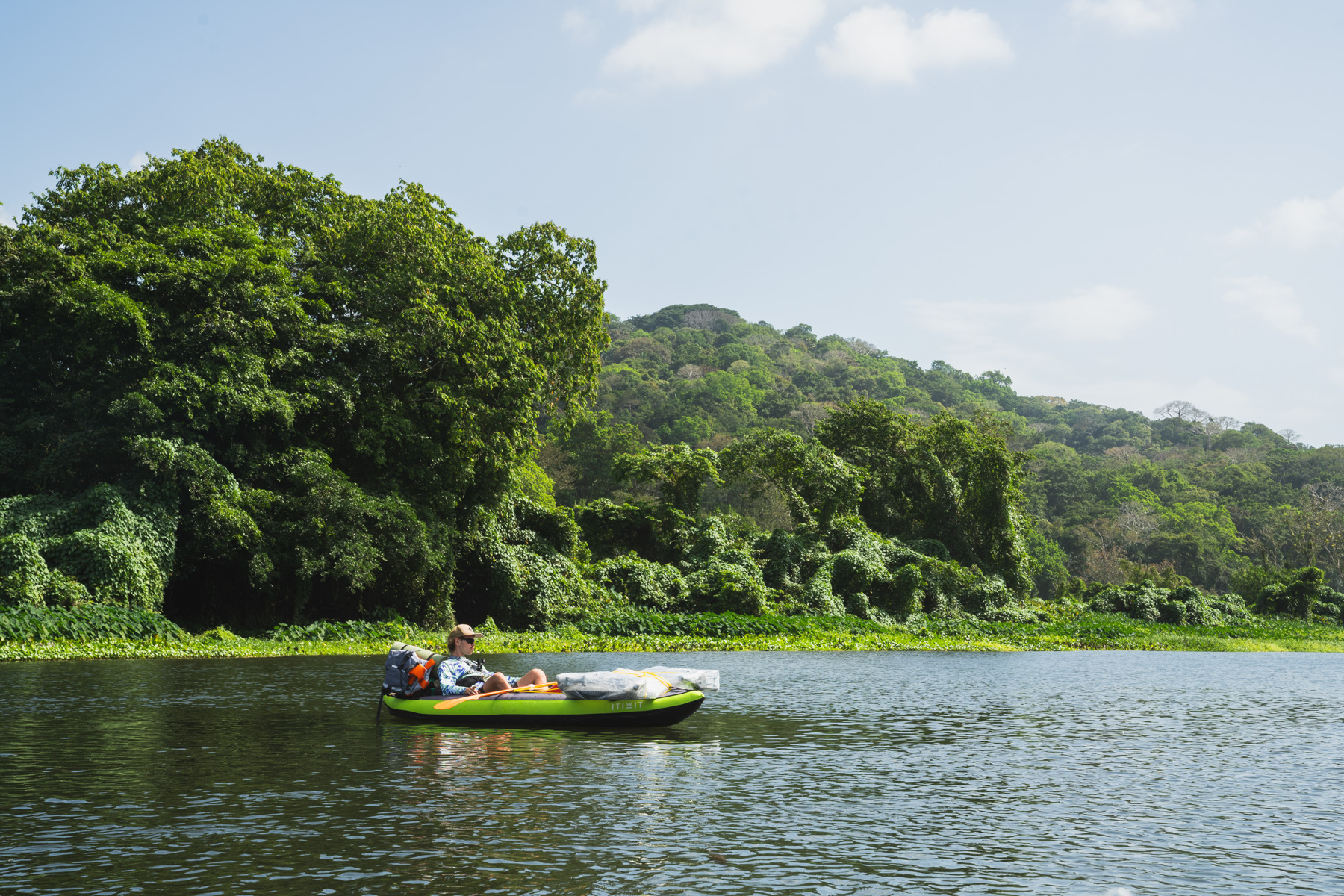
We were having a great first day. There was a very strong current and tailwind. We could sit back and relax while maintaining nearly 3 km/hr. It couldn’t have been easier. As much as I tried to enjoy the moment, I couldn’t stop thinking about being in the large waves of the ocean with all this gear on our kayaks. It was easy now, but it was going to change a lot when we got to the ocean.

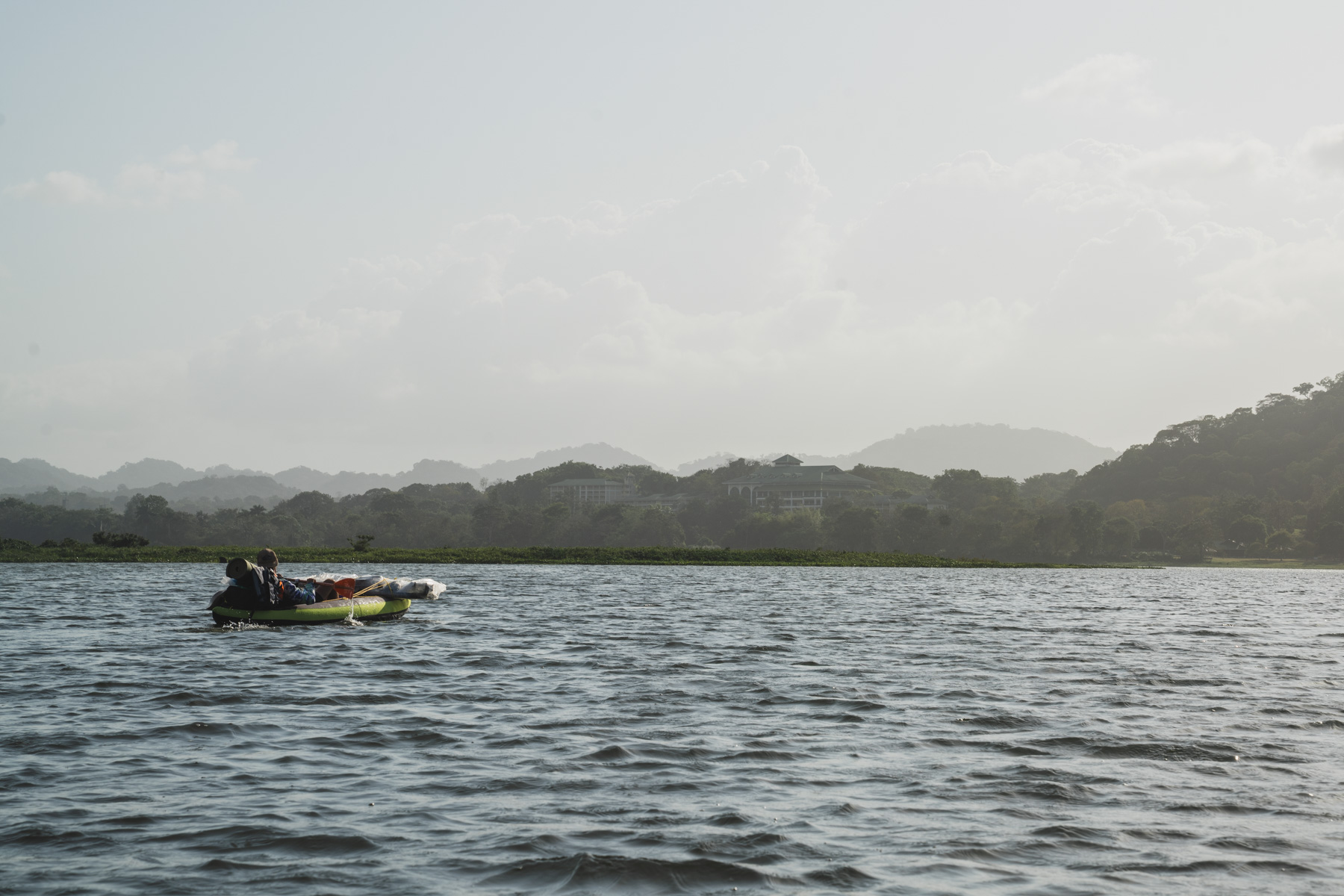
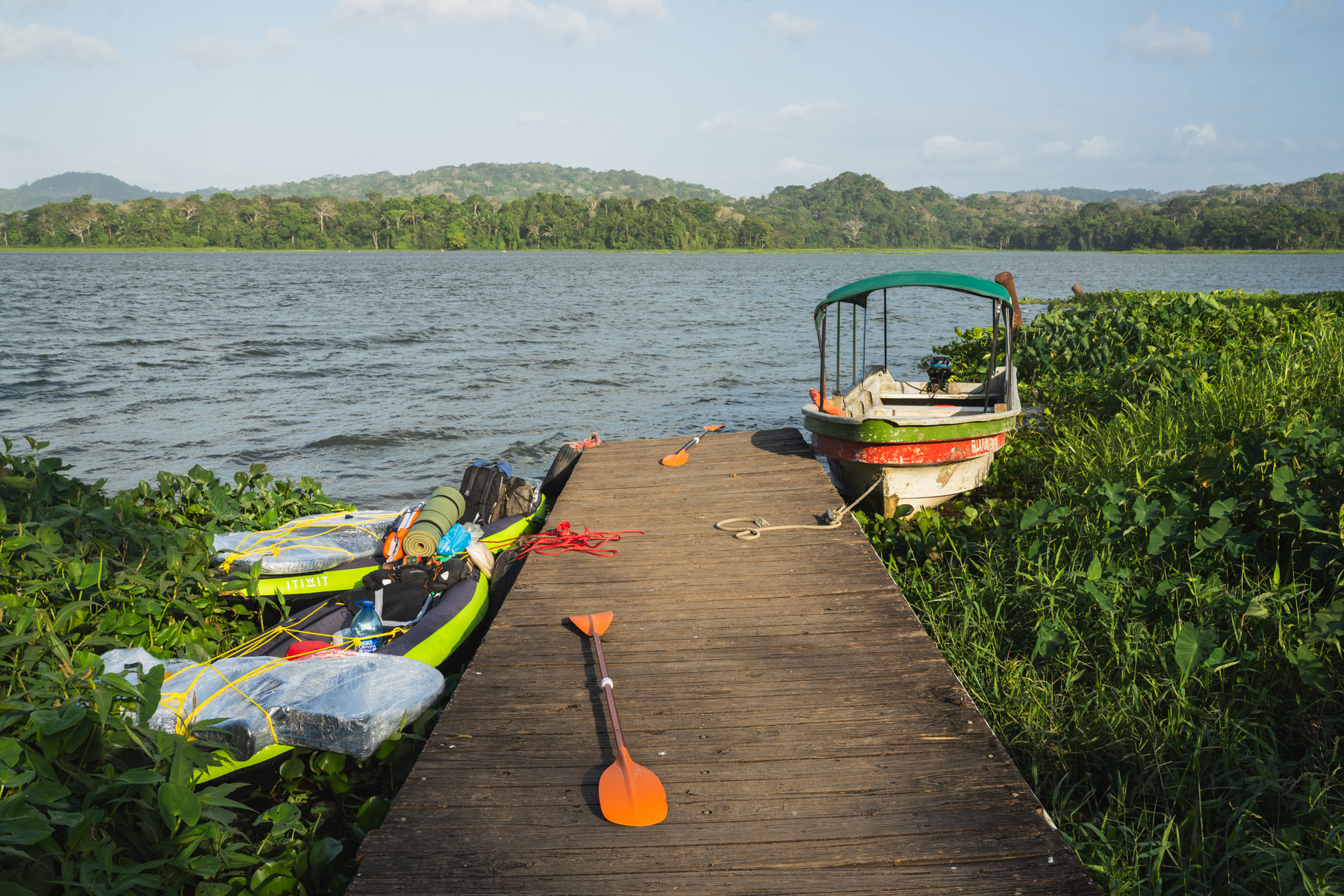
We arrived at Gamboa, our goal for the day. It was a town located right on the Panama Canal, which we were planning on entering the next day. We had done 18km out of our planned 500km. It honestly felt really good. Nearly a month of planning and preparing and we were finally doing it.
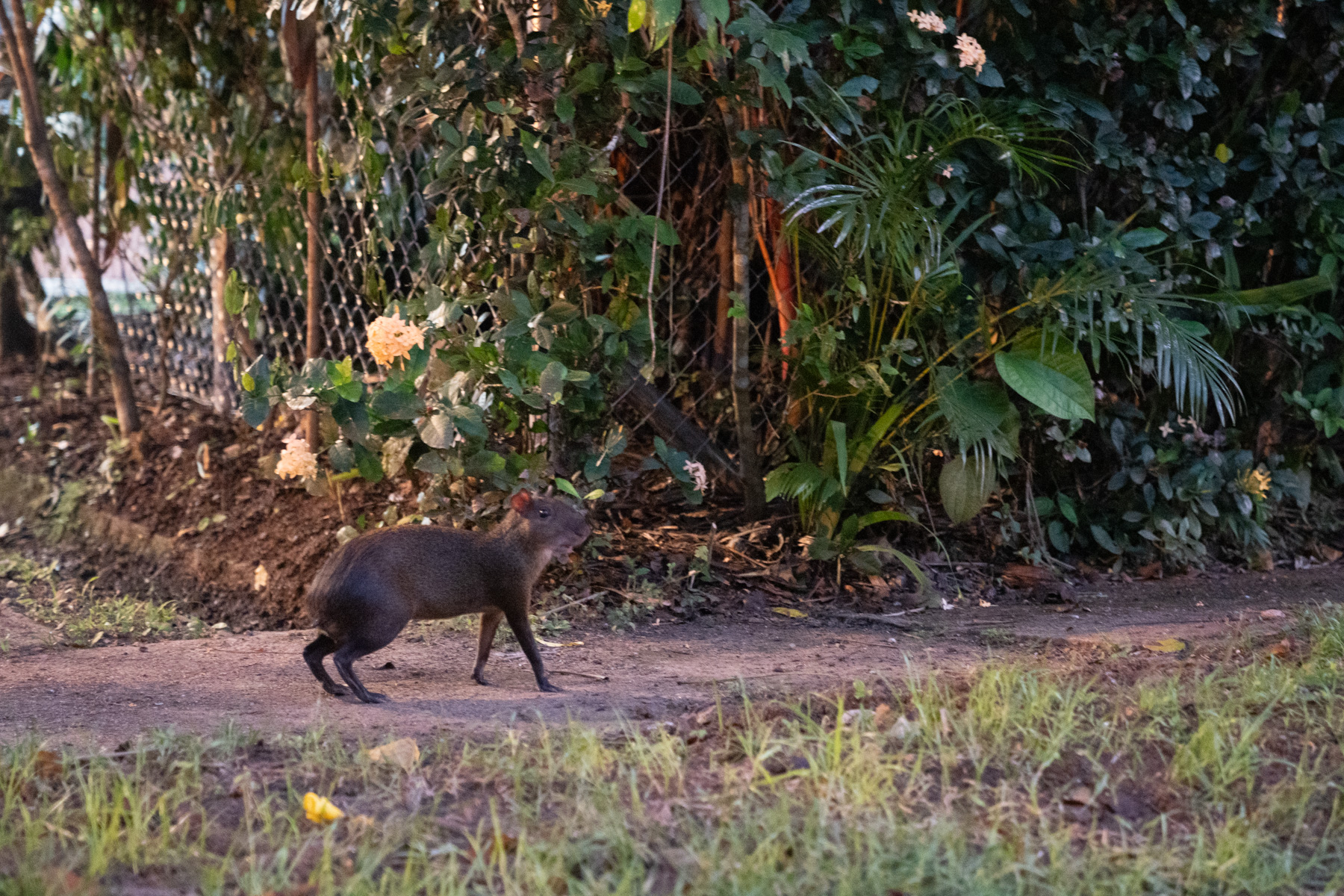
We walked around the town to look for some dinner. It was a very strange-looking town. During the construction of the Panama Canal, there were a lot of people from the United States living and working here. Because of that, all the houses had a style from the USA. Now it was pretty rundown and a shell of what it used to be.
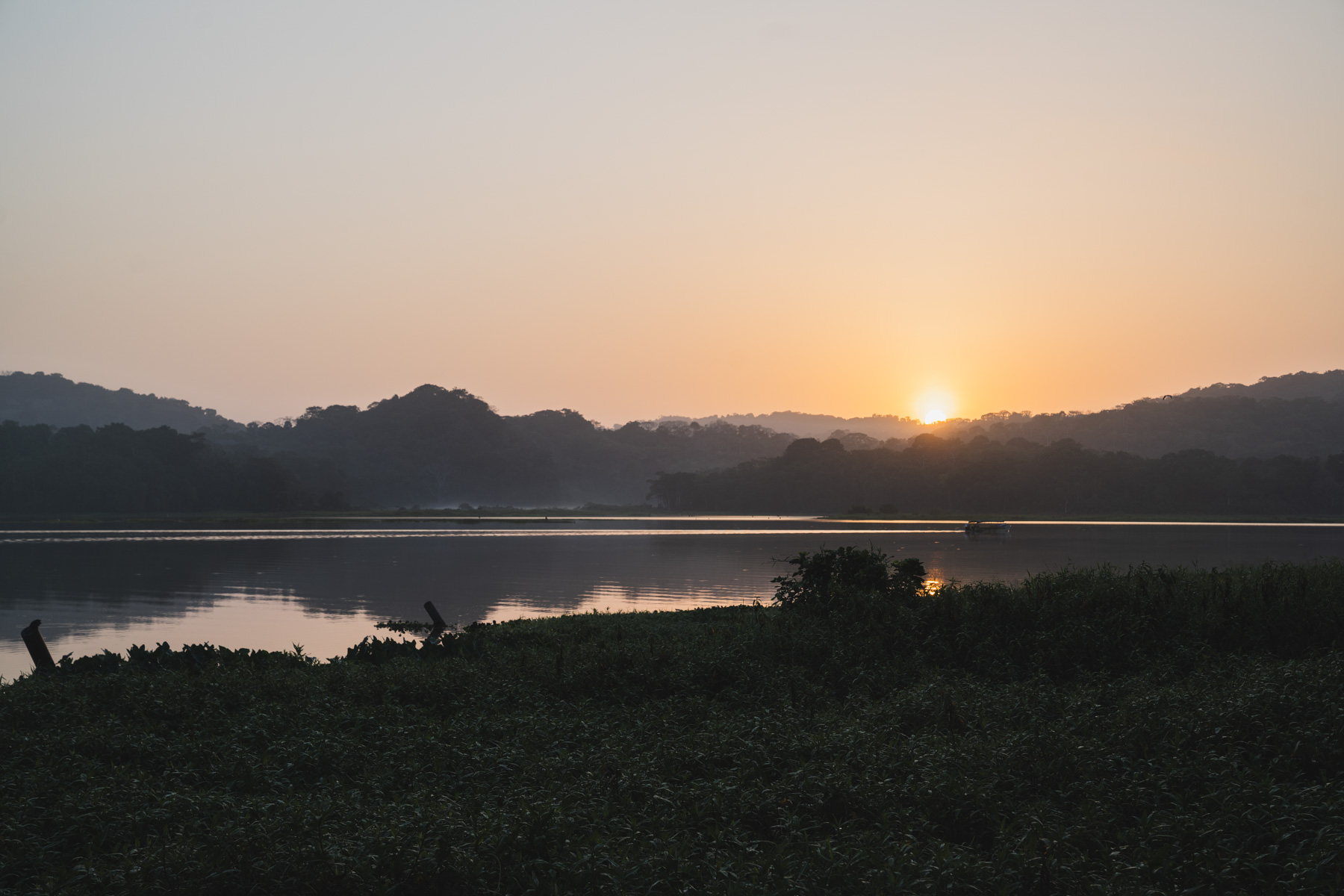

After eating, we decided to set up our hammocks by the dock. That night I couldn’t stop thinking about the risk of taking our bicycles and extra gear on this trip with us. We were planning on spending a month kayaking to Colombia. It would be so much better to do this trip without all the extra weight. So much more comfortable and not to mention safer. Also, the bikes had a good chance of getting damaged from the salt water. We wrapped them in a lot of plastic wrap but I don’t think it would hold forever. We also were not too far from the city and it would only get harder to go back if we kept going. I started to see that it was best that we take our bikes and extra gear back to Panama City to find someone to take them to Colombia for us. I finally fell asleep, dreading the difficult conversation that would happen in the morning.
DAY 2
The next morning I brought it up to Kacper. I was very confident in my decision so it wasn’t much of a conversation, more of me telling him this is what we need to do. He was unsurprisingly not stoked. We had just started and had such a good first day. He was very confident and wanted to keep making progress. Going back to Panama City for what could be a week waiting to find someone to ship our stuff sounded awful. After enough explaining, he agreed even though he didn’t want to.
Now we had a few things to figure out. First, we had to find somewhere to leave our kayaks until we returned. We went to the closest building which was a zipline/adventure center thing and asked the first worker if he could help us. Amazingly, he said he could take all of our stuff back to his community and watch it for us. His name was Marco and he lived in the nearby indigenous community across the river that is only accessible by boat. After getting our kayaks deflated and packed up for him, we got a ride with our bicycles and extra gear back to Panama City.
We were heading to a place called Overland Embassy. It’s a company that helps overlanders (people who travel in big off-road cars) organize transport for their vehicles from Panama to Colombia. Other cyclists have had luck finding someone who has room to store bicycles in their car. This is usually at no extra cost unless you want to tip the overlanding for helping out. Our plan was to camp out there and ask everyone until someone was able to. We had no idea how long it could take and other cyclists have had to wait over a week.
We arrived at Overland Embassy and went inside to talk to the workers about our plans. They were extremely helpful and immediately introduced us to Aiden, a cool guy my age who was shipping his car the very next day to Cartagena, Colombia. After talking for a few minutes he was down to help us and we moved some stuff around in his car and found some space for our bicycles and the extra gear. Kacper and I were in disbelief at just how lucky we got.
There was still one more thing to figure out, though. The bikes would arrive nearly a month before us and we had to find someone in Cartagena who could meet up with Aiden and store our bikes for us. I messaged a host on Warmshowers named Deimer and he agreed and offered to do whatever he could to help us out.
Wow, and just like that everything was taken care of. Thanks to the kindness of three random strangers, people we had just met or not even met yet, Kacper and I had organized our bikes to be shipped and taken care of between continents so we could continue our trip. Sometimes the goodness of the world surprises me and this was only the first of what would be many surprises on this kayak trip.
After our difficult conversation and morning, the mood had improved drastically. We would be able to return to Gamboa the next day. Overland Embassy had a campground that we chilled at carefree for the rest of the night.
DAY 3
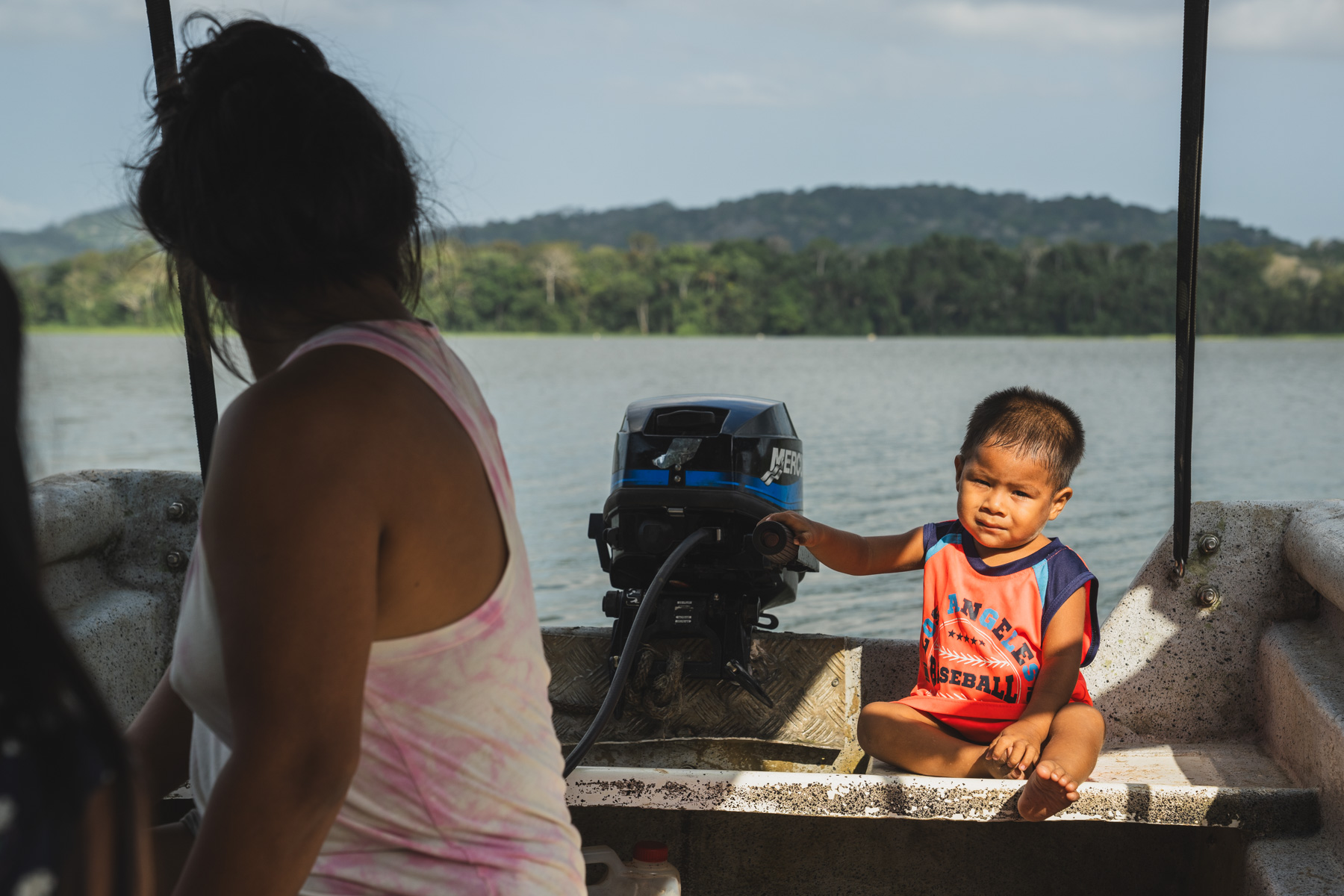
We hopped on a bus back to Gamboa and contacted Marco and told him we would be returning that afternoon. He invited us to come and spend the night with him in his village. He would have to work till a bit later but he connected us with a family member and we took a boat with other locals over to the community.


We arrived at the wonderful indigenous community of Ella Puru. There are about 50 people who live here and most are from this community, but others come from other indigenous communities around Panama. A lot of tourists visit this community on tours, but we were one of the very few to be invited here to stay under these conditions.

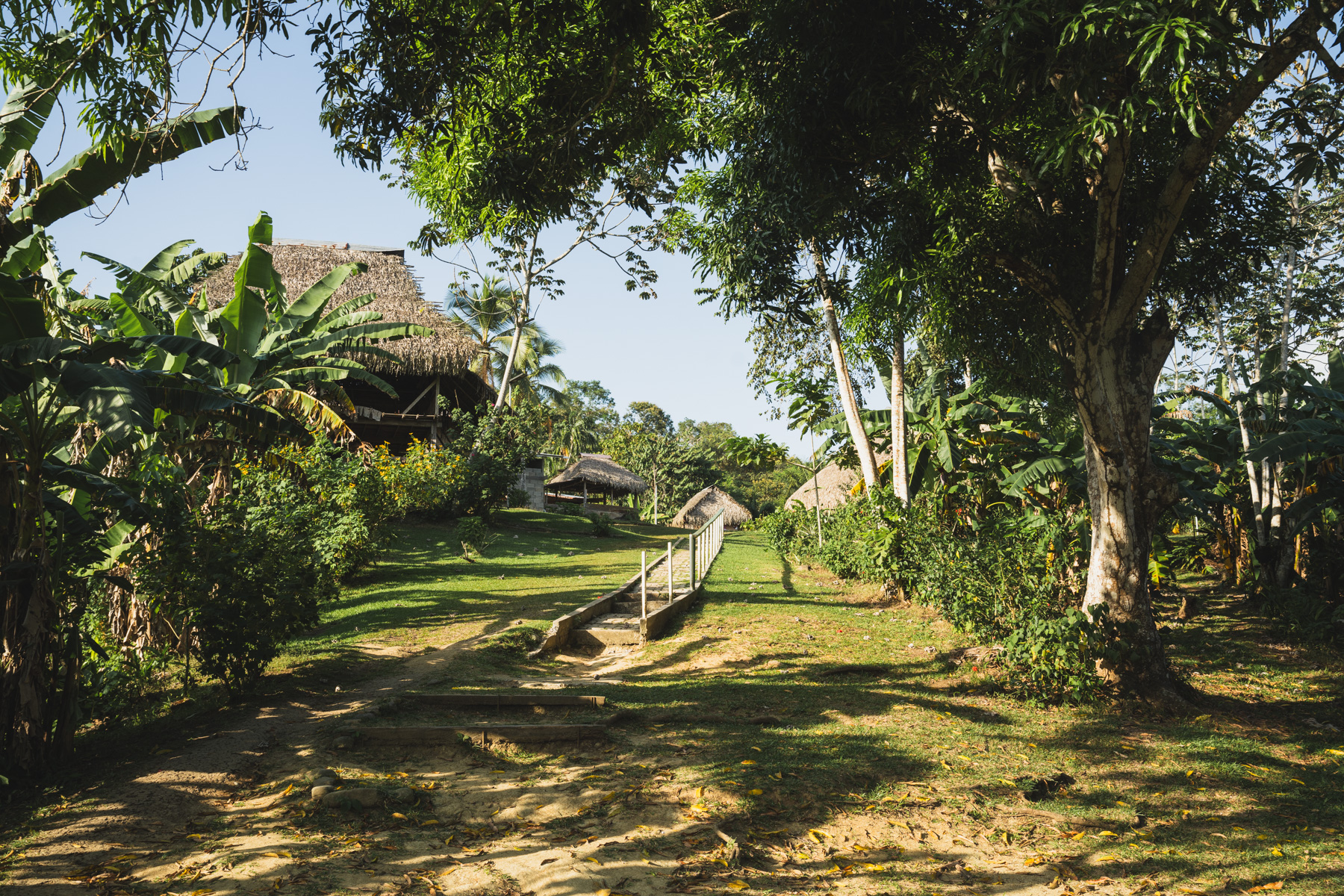

Marco’s family member showed us around the community and got us set up underneath his house.

We had some time to kill until Marco arrived, so we played around with a bunch of the local kids who were curious about us. We jumped and swam in the river with them, thankful not to run into to any crocodiles.
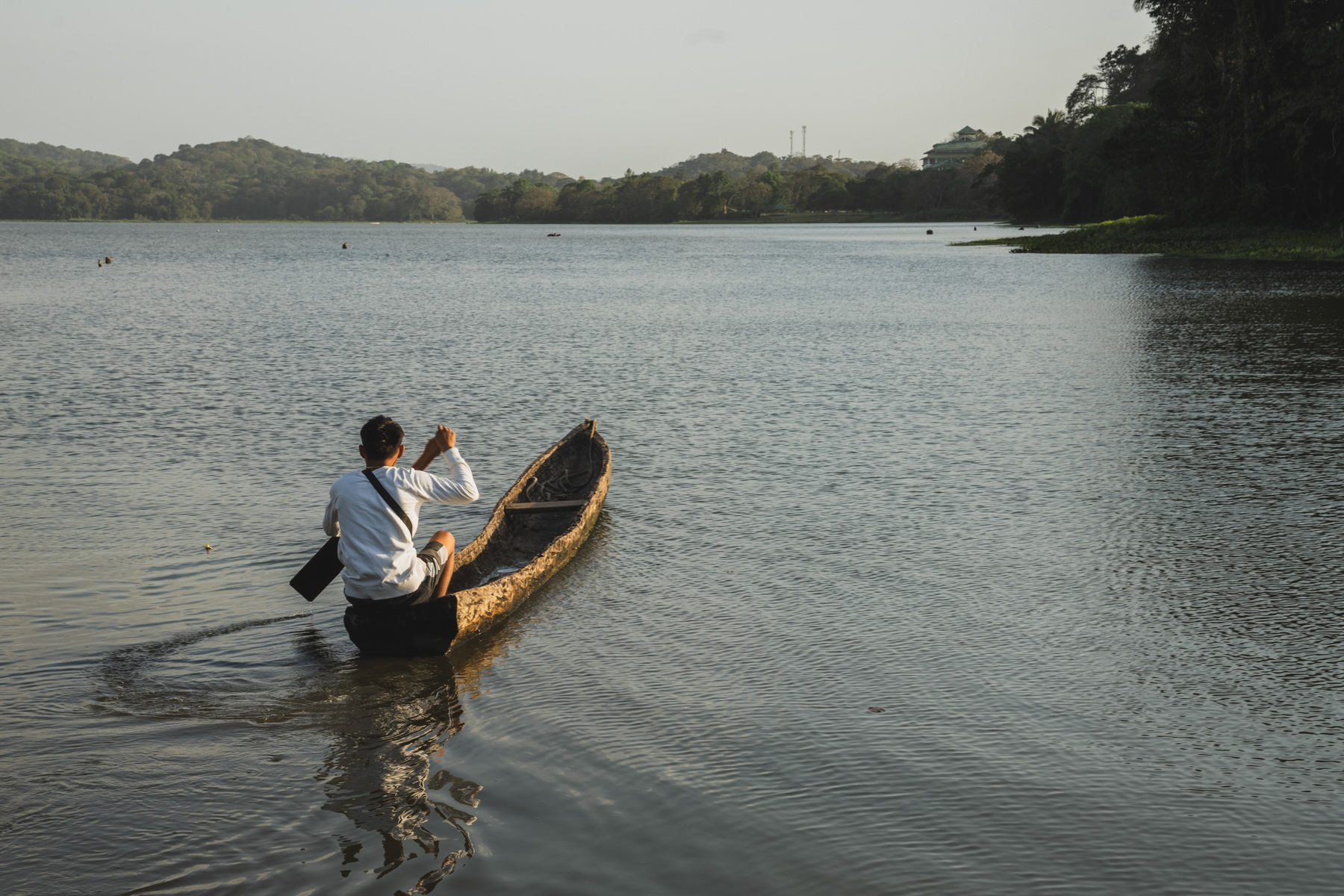
These cayucos are handmade canoes made out of trees. These were the first ones we saw, but we would see countless more once we reached the region of Guna Yala along the ocean. They are beautiful and very cool. We originally wanted to do this trip in some, but they are very heavy and very hard to balance.

Marco arrived after work and wanted to take us and some local girls on a boat ride to look for crocodiles. Marco wasn’t from the village of Ella Puru originally but was from a community located in the Darien region closer to Colombia. He came out here for better work opportunities.

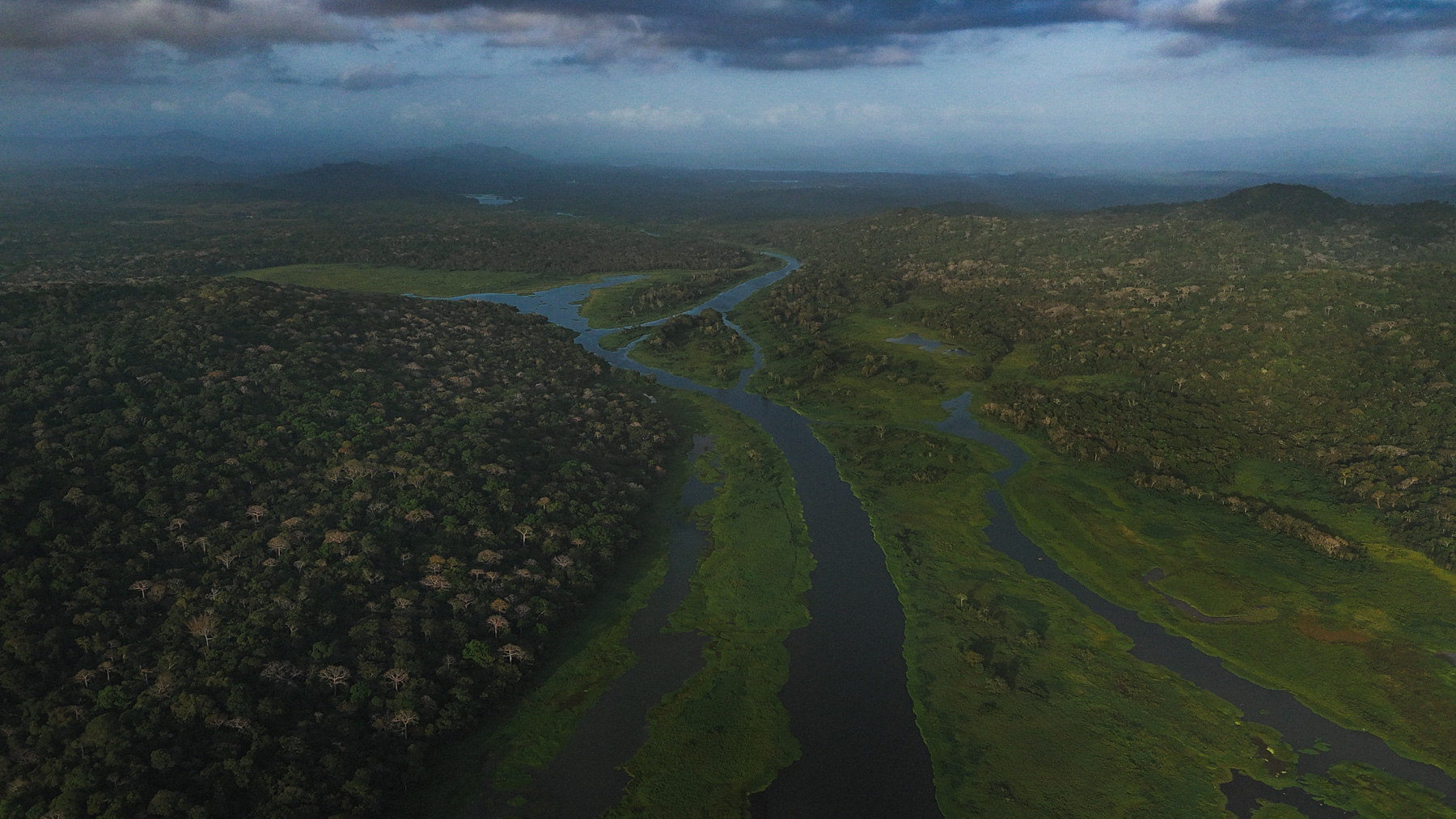
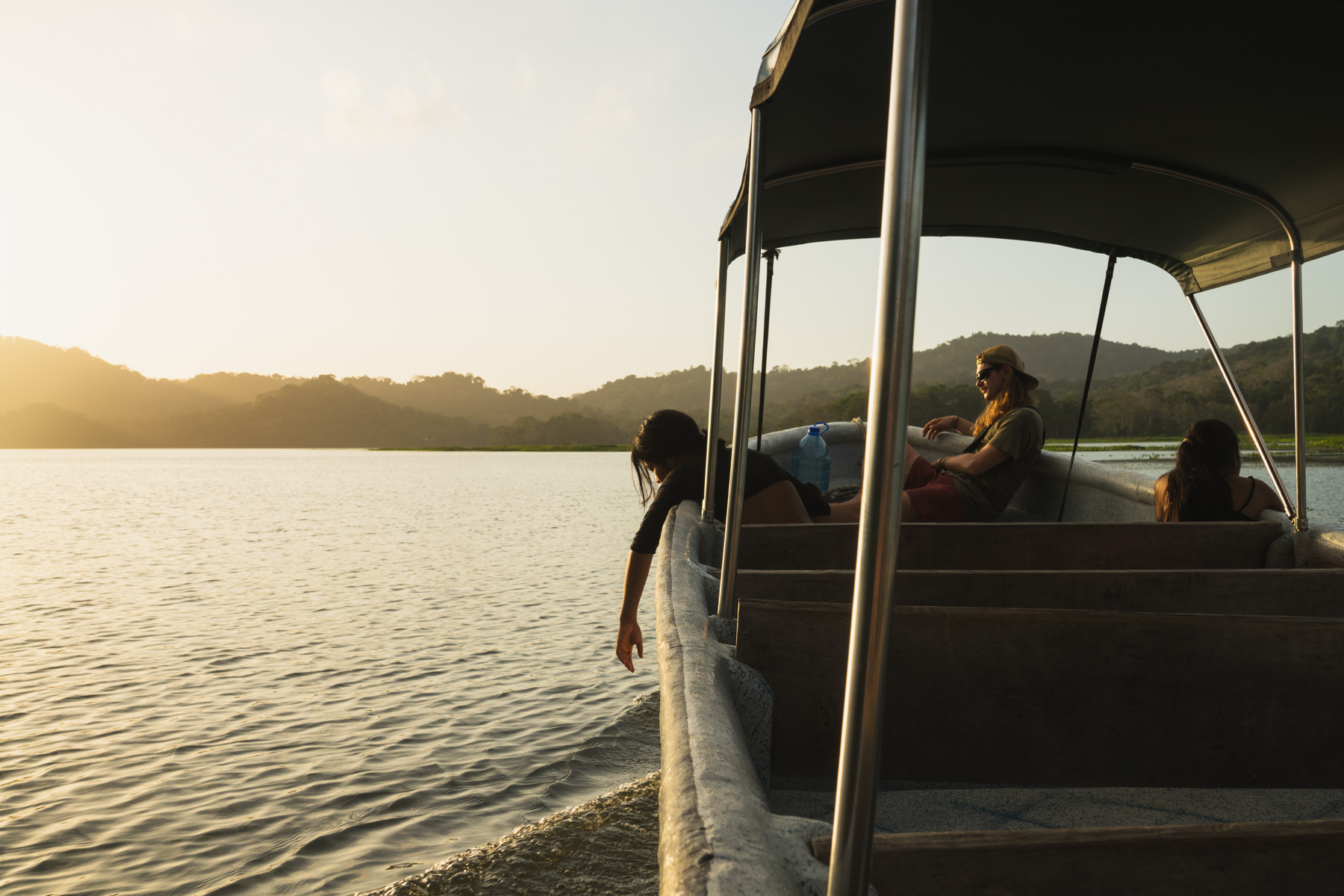
No crocodiles were found but we had a great time. Marco shared a lot of information about the history of the area and the indigenous people with us.
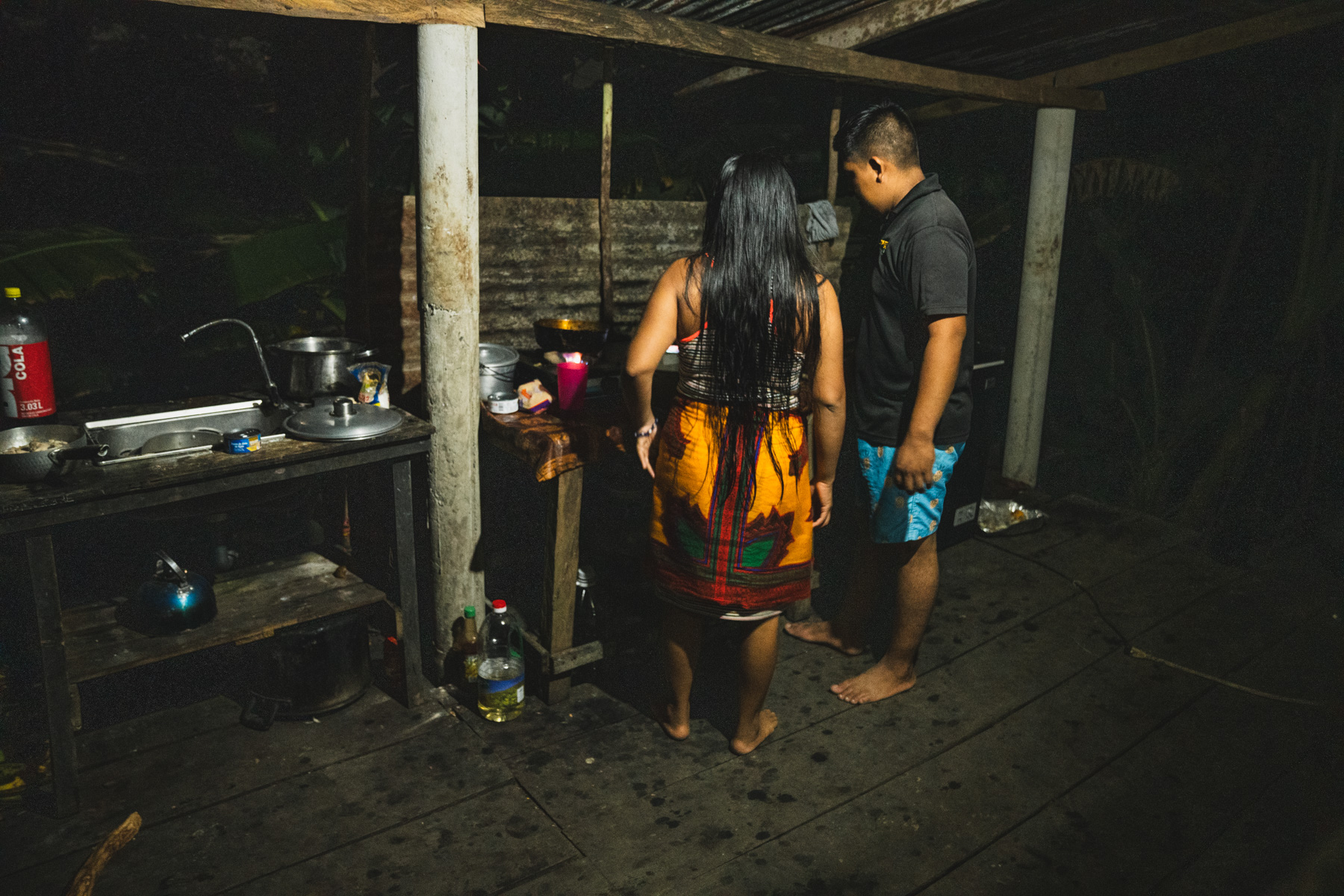
Marco and his wife offered to make us dinner. The hospitality we were shown here was amazing. After dinner, we spent some time with more of the locals and got to hear more about them and their lives. Multiple tours come to this village daily and the locals dress up and perform traditional music and dances for the tourists. This creates quite a strange situation that I noticed. These traditional performances become less about tradition and more about work for them, especially the next generation. The younger people we talked to didn’t enjoy it and only did it for work. It’s no different than you or I putting on your work clothes and going to the office to work all day. As soon as the tourist leave, they change their clothes and go back to a normal life.
DAY 4

After a nice breakfast with Marco, it was time to continue. The kayaks now were extremely lighter and more comfortable. We had so much more space and it felt much safer. Just around the corner, we would be entering the Panama Canal, the connecting point between the Atlantic and Pacific Oceans. To be honest I was very unsure of if we would be allowed to paddle in it. Kacper and I originally got the idea when we were researching and found a website that offered a kayak tour through this section. Seeing that, we assumed it was possible and we read that there was a small boat lane on the side of the canal. The idea of paddling alongside massive container ships was too amazing of an idea to pass up. Diego, the kayak shop owner in the city, said that it was possible but required a lot of paperwork and permission. We didn’t have the time to wait for that so we decided to go for it anyways.
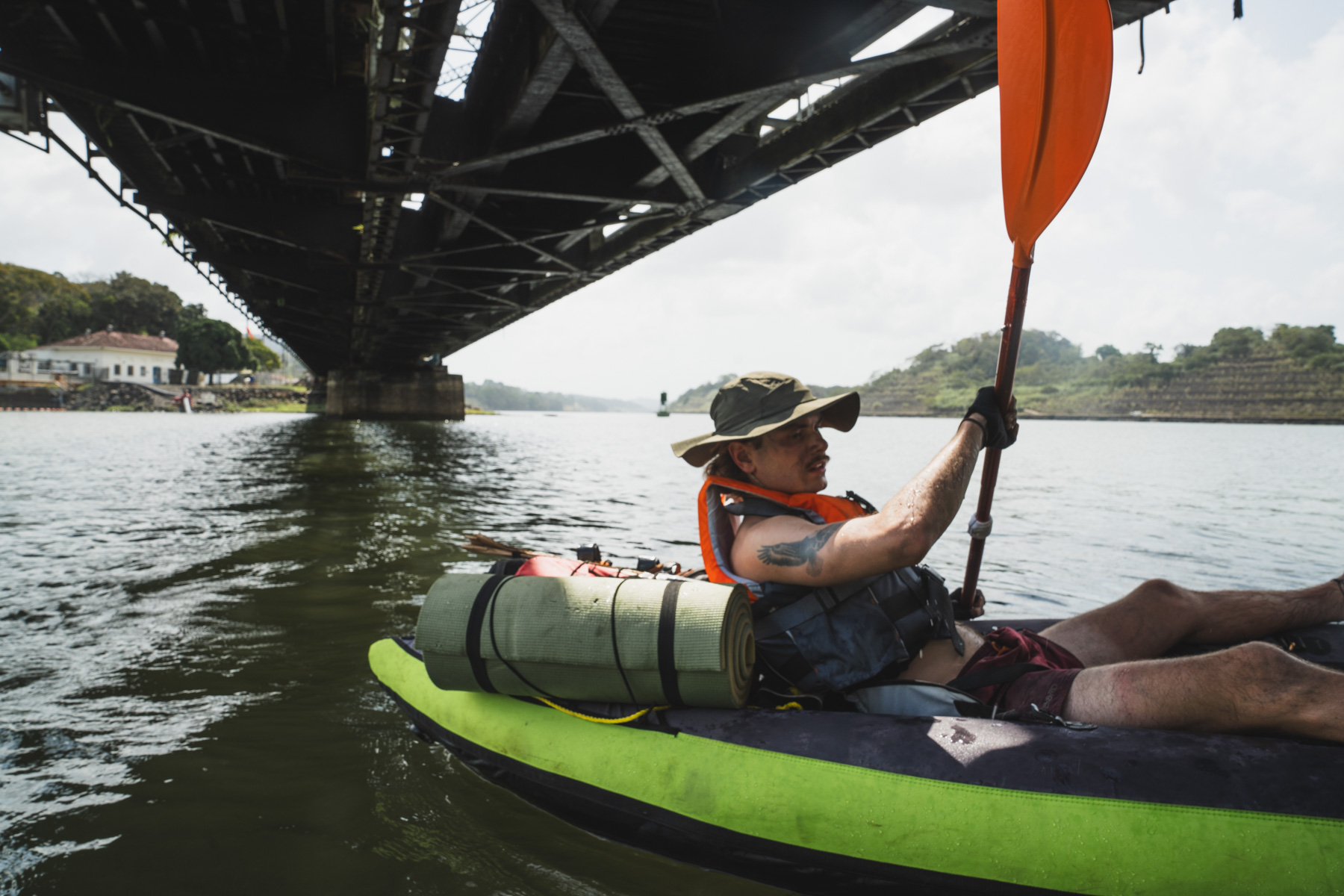
After a short paddle, we reached the entry point for the canal. We didn’t see any signs saying anything that made us think we couldn’t enter. We looked at our boat traffic map and saw we had a good window of no traffic which was plenty of time to cross to the other side.

We looked at each other and then took off paddling as fast as we could to cross the shipping lane. On the way to the other side, we went past a catamaran. I noticed someone official looking was staring at us while he was on the phone. I tried to wave and say hello but he ignored us. I started getting a bad feeling that he was not a friend.
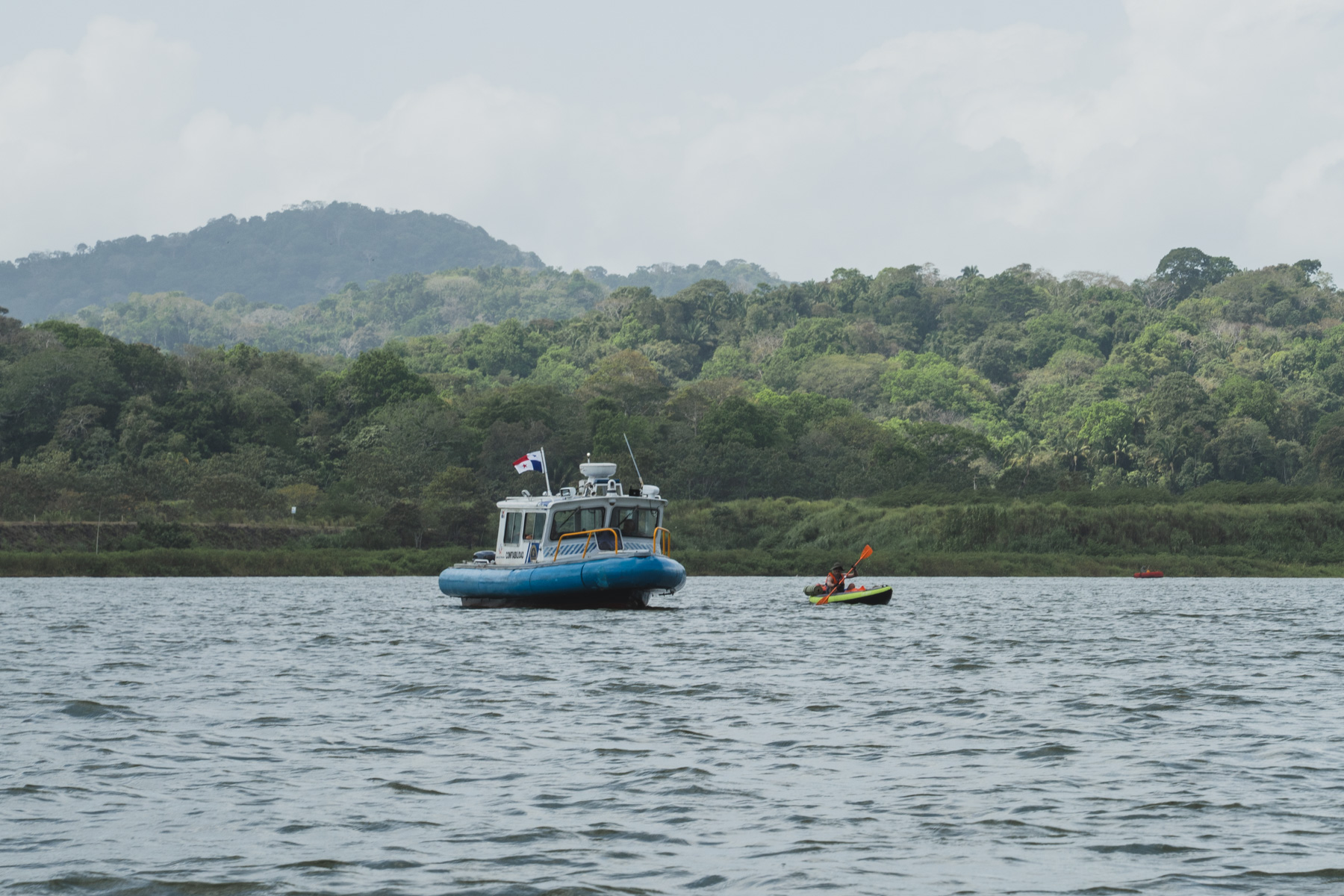
We didn’t make it very far until what was clearly a police boat came speeding up to us. They were pretty nice to us, but they would not let us continue no matter how much we begged and pleaded. They told us that you needed to have a motor to enter, and they didn’t seem to count our arms as motors. They escorted us back to the other side.
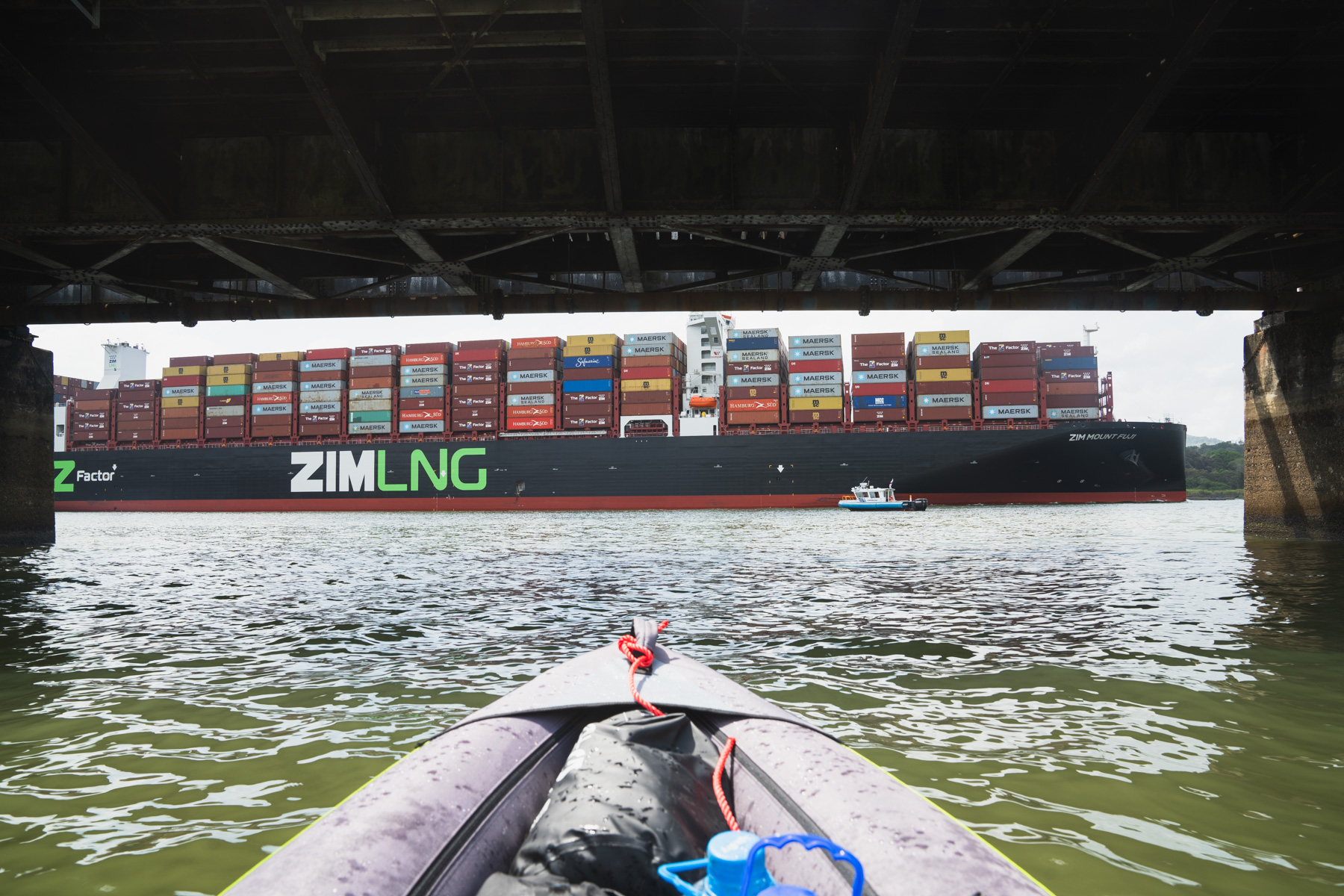
We didn’t exactly get to paddle alongside one of these giants, but we still got a good view from here. The police stayed around a bit to make sure we didn’t enter again.
This was quite a problem for our trip. We now had to find a way to the other side where to river continues off of the canal. We tried to ask some boat drivers at a nearby dock to take us the 30km but they quoted us outrageous prices. The only logical option was to bus to the other side. This would require us to go back to Panama City yet again, then bus to Colon, and then hire an Uber to the river. The idea of going back to the city was awful, but it seemed like it was all we could do.
DAY 5
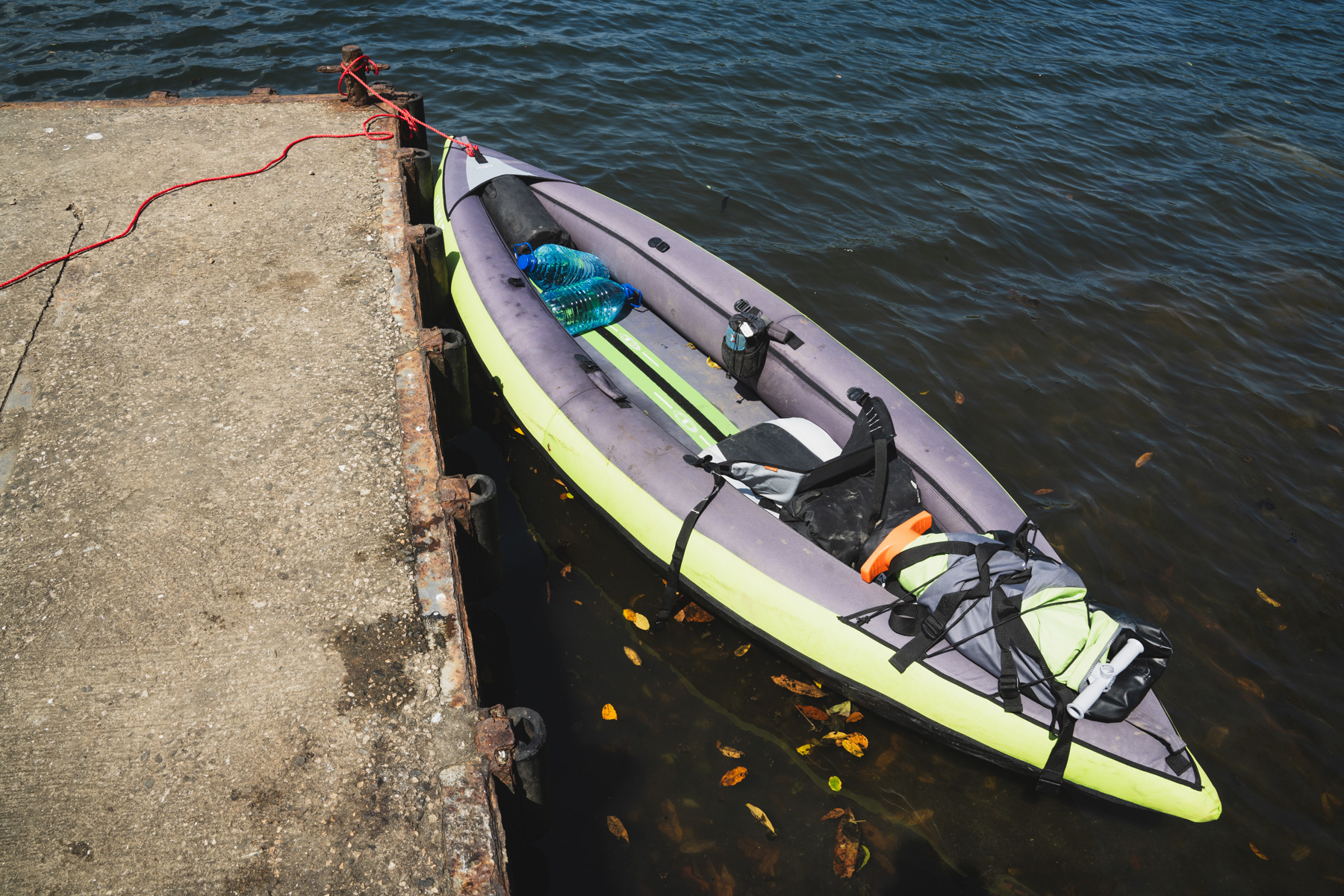
In the morning we took a bus from Panama City to Colon. As soon as we arrived we called an Uber as all we wanted to do was get back on the water. We arrived and inflated and set up our kayaks again, now for the third time. Surely this was the last time, right???

It was another calm and easy ride along the river. We didn’t have the same tailwind and current as the first section, so it took a bit more effort. Today, our goal was to make it to the end of the river, where it connects with the ocean.

After around 15km, we saw our first view of the ocean. The first days on the river were just a warm-up. The real challenge was the ocean. And now it was right in front of us.
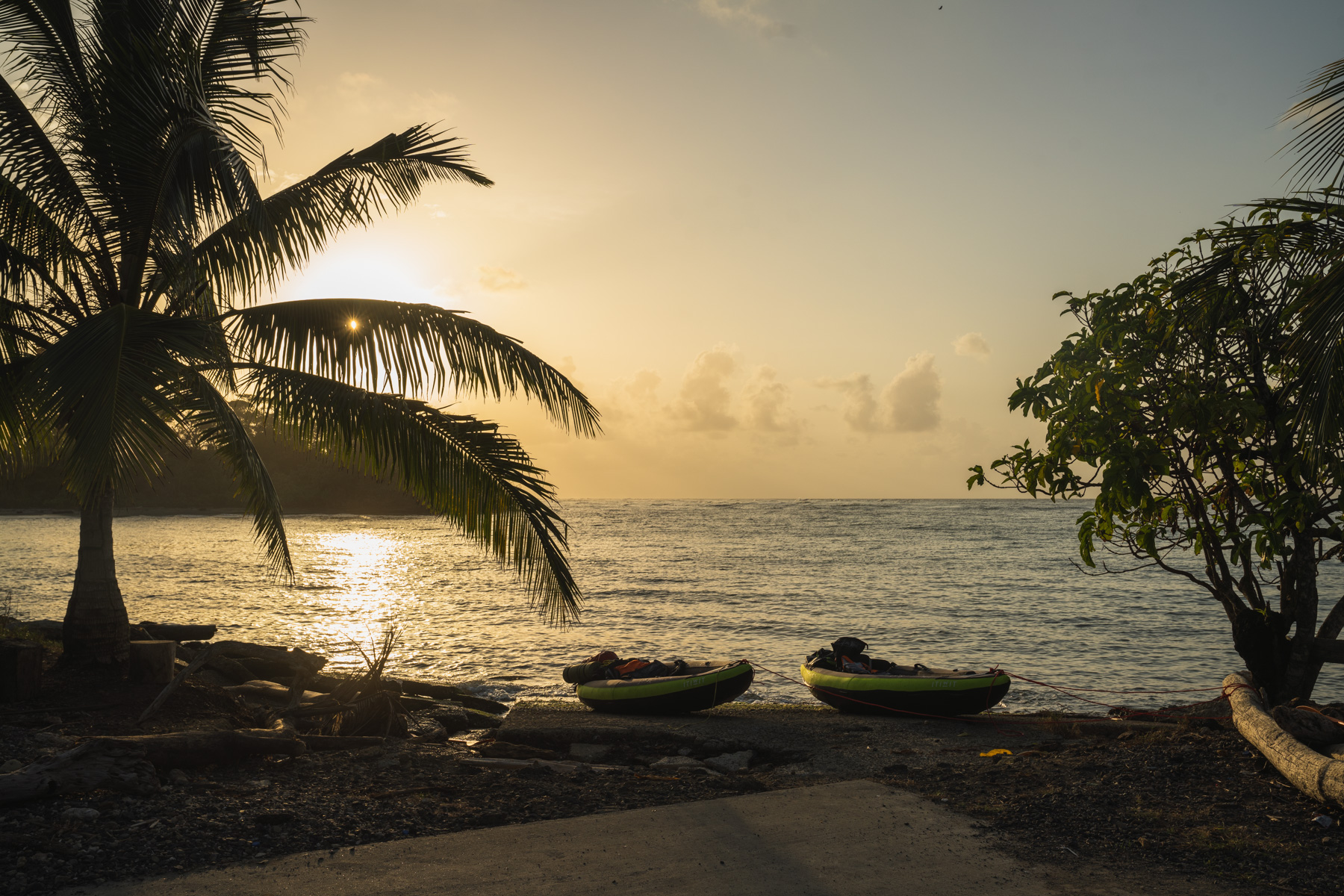
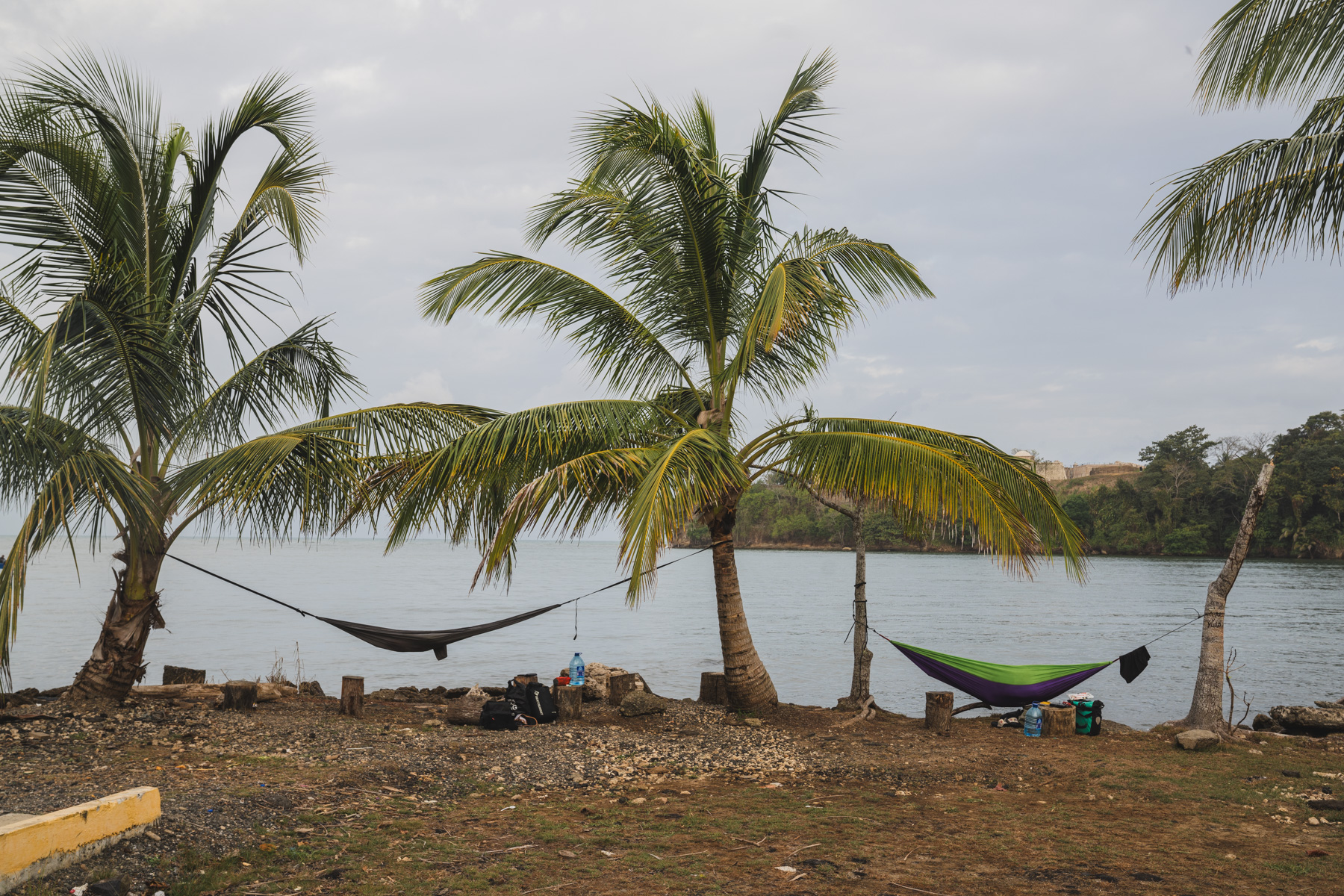
We stopped at a park near the mouth of the ocean. I was constantly staring out there, trying to get an idea of what to expect. I could see waves from here and it was hard to judge how it would be to paddle in. We use an app called Windy that gives us very detailed forecasts for the wind, waves, and currents. This application would be invaluable on this trip. The forecast told us we would be going head-on into a strong current with 3m (6ft) waves and 17km (10mph) headwind. How hard could it be? We would find out tomorrow.
DAY 6
In the morning, we made sure our kayaks were ready for the ocean. We had a lot more to worry about out here. The chance of flipping was now a real threat and we had to be prepared. We made sure all of our gear was secure to the kayaks and took off towards the open sea.
As we approached, the crashing waves we could see on our sides got bigger, much much bigger. It was obvious they would be devastating to get caught in. We had a clear path around the break and soon we were in the heart of it. During this time, getting my camera out to take photos was not an option. If I were to stop paddling even for a few seconds I would get turned and be at a much greater risk of flipping. You’ll have to use your imagination to envision what it was like.
I’m not going to lie, I was terrified. On my entire trip, I have never felt like I was putting my life in danger, but that changed here. It seemed like at any moment a rouge wave could crash on either of us and it would be very hard to help save each other. We stuck pretty close and we were both running on adrenaline. It felt like we were on a roller coaster going up and down these waves. The main fear was the seemingly random rouge waves. For the most part, when you are behind the wave break, the waves are predictable and relatively safe. Due to the extremely high wind, there were a lot of waves breaking randomly all around us. Some were small but some could flip you if you were in the wrong place at the wrong time. There was no way to predict them. All we could do was be vigilant and keep paddling forward.
We planned to go about 10km to a safe place where we could beach and camp. Once we were in the ocean we realized it was a rocky and dangerous coastline the entire way there. There would be no stopping anywhere along the way. We were also going directly against everything the ocean had. The waves, the current, and the wind were all pushing us backward.
After two hours, I needed to know how far we had gone. Looking at the coastline, it seemed we were moving, but it was hard to tell how much. It was very risky to even pull out my phone so I tried to be quick. We had gone 1.5km. Not even 1km/hr. This was not good. It would take us more than 10 hours to get to the next place we could stop safely and we were fighting very hard to make any progress at all, along with the fact we both genuinely feared for our safety. Kacper and I talked and we decided it was not smart to continue. We would need to return to where we started and rethink this. The distance that took us 2 hours to make, took only 15 minutes to go back. That’s just how strong the weather was we were going against.
Back at the park, the mood was low. This trip had been off to a very rough start as it seemed like we kept having problem after problem. Nothing was going according to plan and after our first experience in the ocean, I began to wonder if it was even possible this time of the year. There is no way we can safely paddle 500km in those conditions.
We checked our trust app Windy and saw that while the next few days were worse, in about 5 days there seemed to be a pretty decent weather window. The predicted waves dropped to less than 1m and the wind dropped to less than 5km/hr. This window would last nearly 4 days also. This could be our chance. Our main goal was to make it to the region of Guna Yala (San Blas Islands). Once we made it there, we would be protected by reefs and islands for a while and the conditions would be much better. We were way too far away from Guna Yala to make it there with our 4-day window, so we made the decision it was best to bus further along the coast.
We had what seemed like a good plan, but it was hard to not feel defeated. We failed to bring our bicycles with us, we failed to cross the Panama Canal, and we failed on our first day in the ocean. How much more failure could we take? Even though we were constantly met with challenges on the water, we were having great experiences with everyone we met along the way. The ocean didn’t seem to want us to accomplish our goal, but every person we met wanted us to.
With our new plan, we had to head back to the city of Colon. We were at a pretty busy park where lots of locals were fishing, so we figured we would try and hitch a ride. The first person we asked was happy to take us back to the city. He was here on his day off fishing with his family, yet he was more than willing to take time from that to help us out. We deflated our kayaks and packed up our gear yet again, and headed off to the city.
DAY 7
Since we had a couple of days to kill before the better weather arrived, we decided to spend an extra day off in Colon. Colon was an interesting city, not really in the best way. Half of the city was falling apart and it felt like we were in some post-apocalyptic city. Many people we met told us it was very dangerous and we shouldn’t be walking around. We met some police officers who we talked to for a bit and told us the same thing. He pointed down a few different streets where people had been shot recently. Maybe not the best place for a day off, but we found some good food and enjoyed it anyway.
DAY 8
In the morning we lugged our kayaks and gear yet again and boarded a local bus that would take us to Puerto Lindo. On the bus ride, we both were staring out at the coast, constantly assessing the conditions. It slowly improved into a beautiful and calm-looking coastline, with all the big waves crashing far away from the coast. It was a huge difference to the coastline we attempted to paddle the other day.
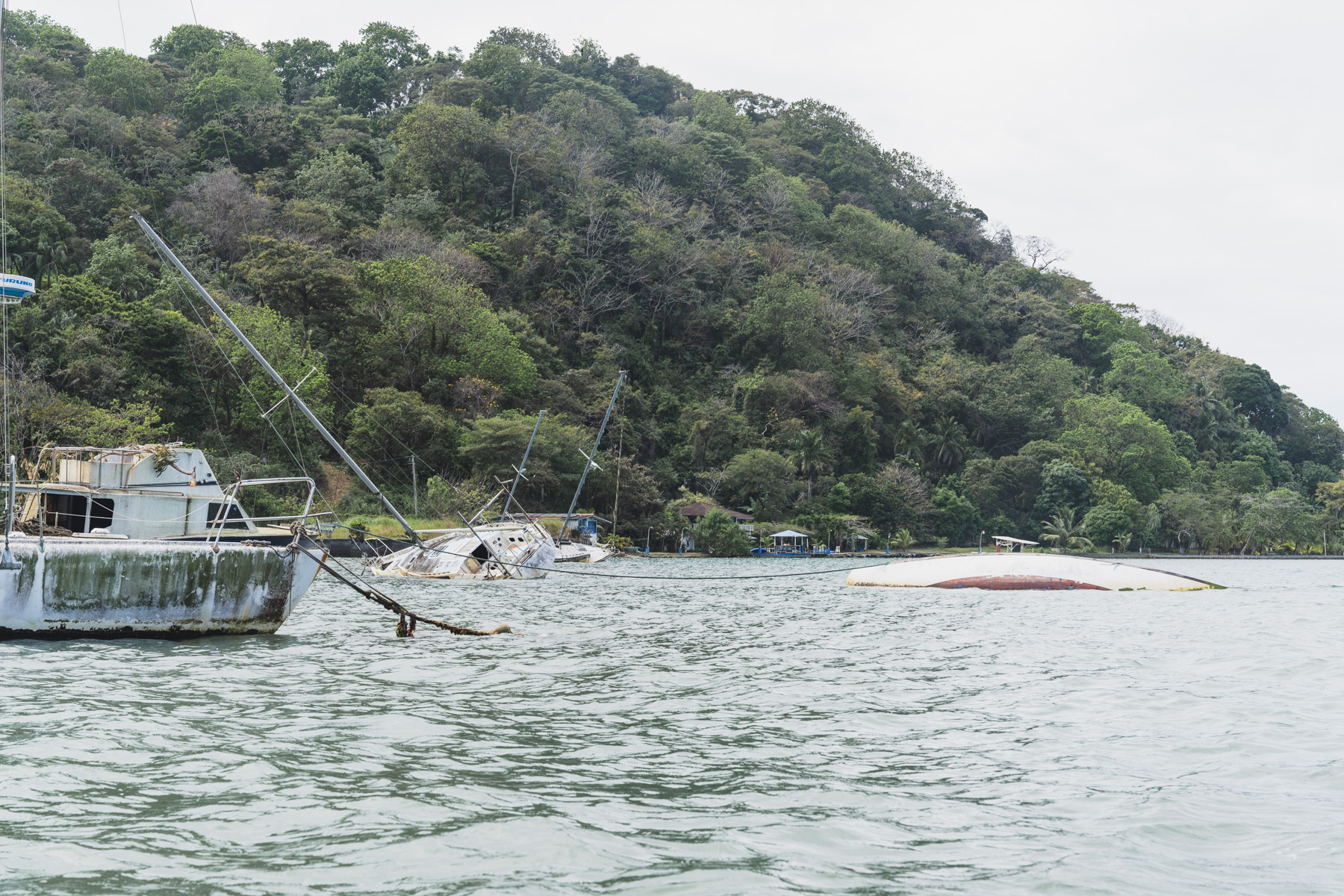
We arrived at Puerto Lindo with huge smiles on our faces. We could see a few islands and wonderfully calm waters. We inflated and set up our kayaks, now for the fourth time. I had a good feeling that this would be the last time. We planned to do a few short days around this area while we waited for the good weather window, and then we would push hard to Guna Yala.
While we were setting up the kayaks, we met a really nice couple, Yvonne and Mike. They were sailors and invited us to come have dinner with them on their sailboat the next day.
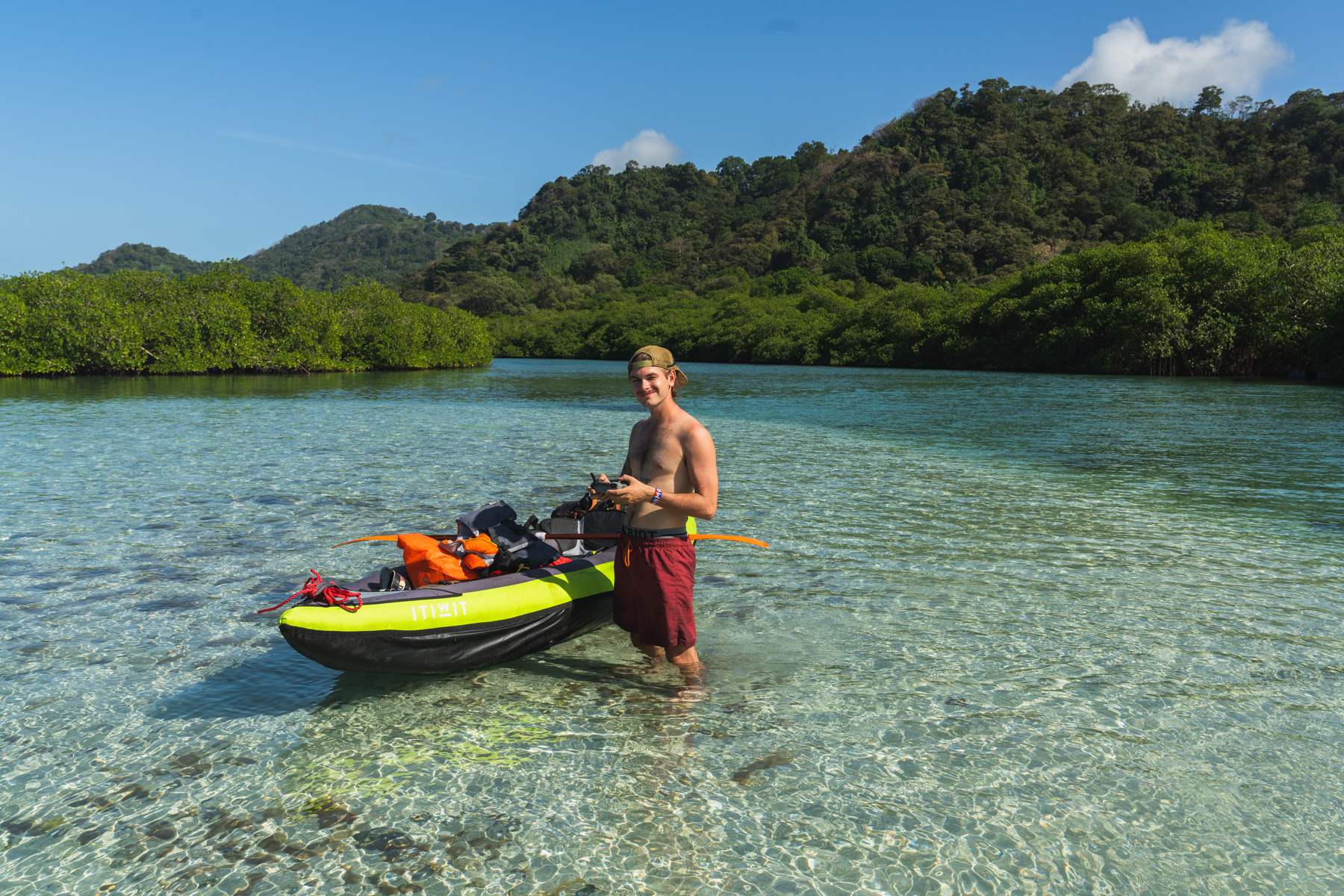
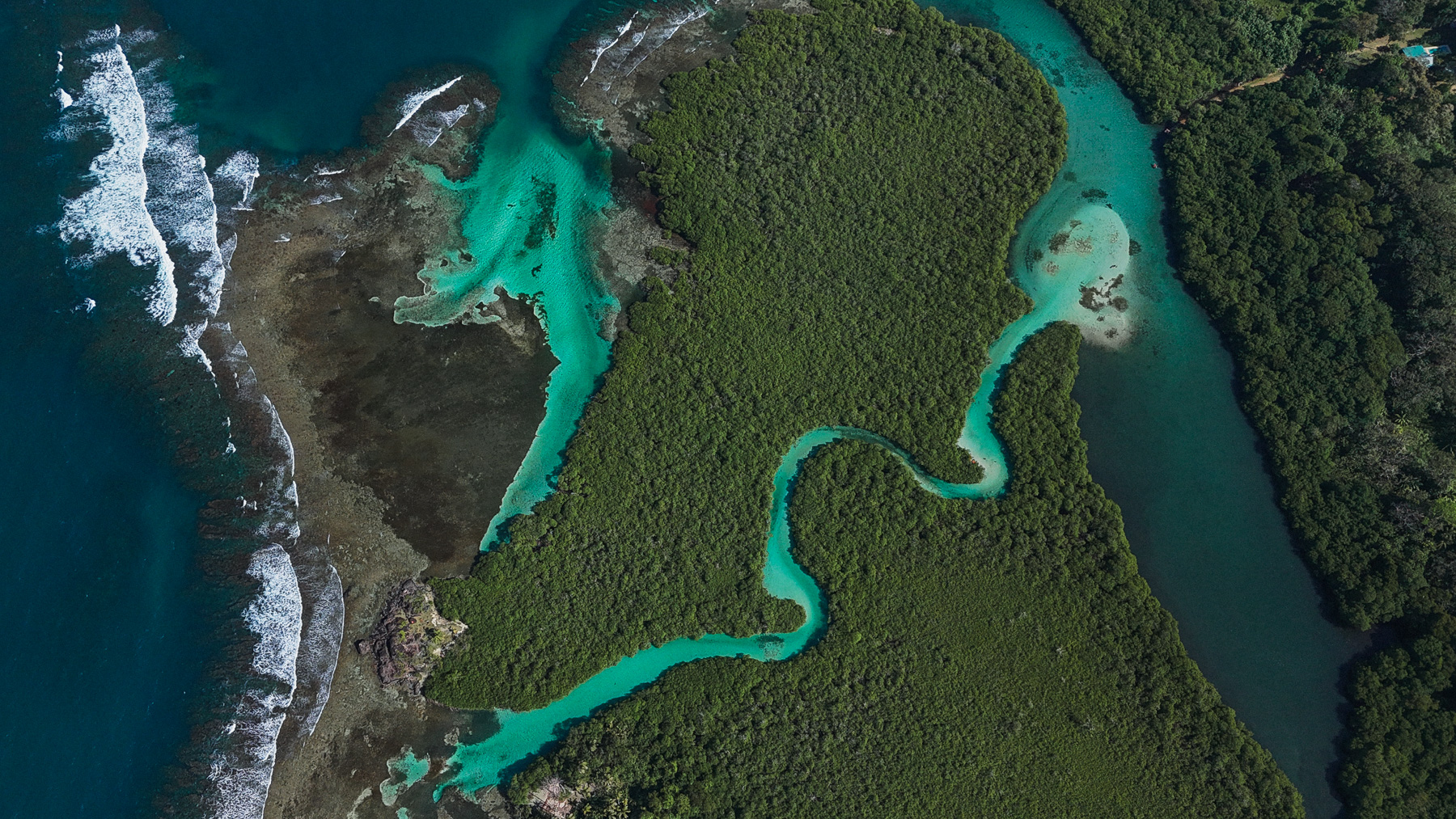
We first checked out a nearby natural canal and experienced some crystal clear water surrounded by mangroves.
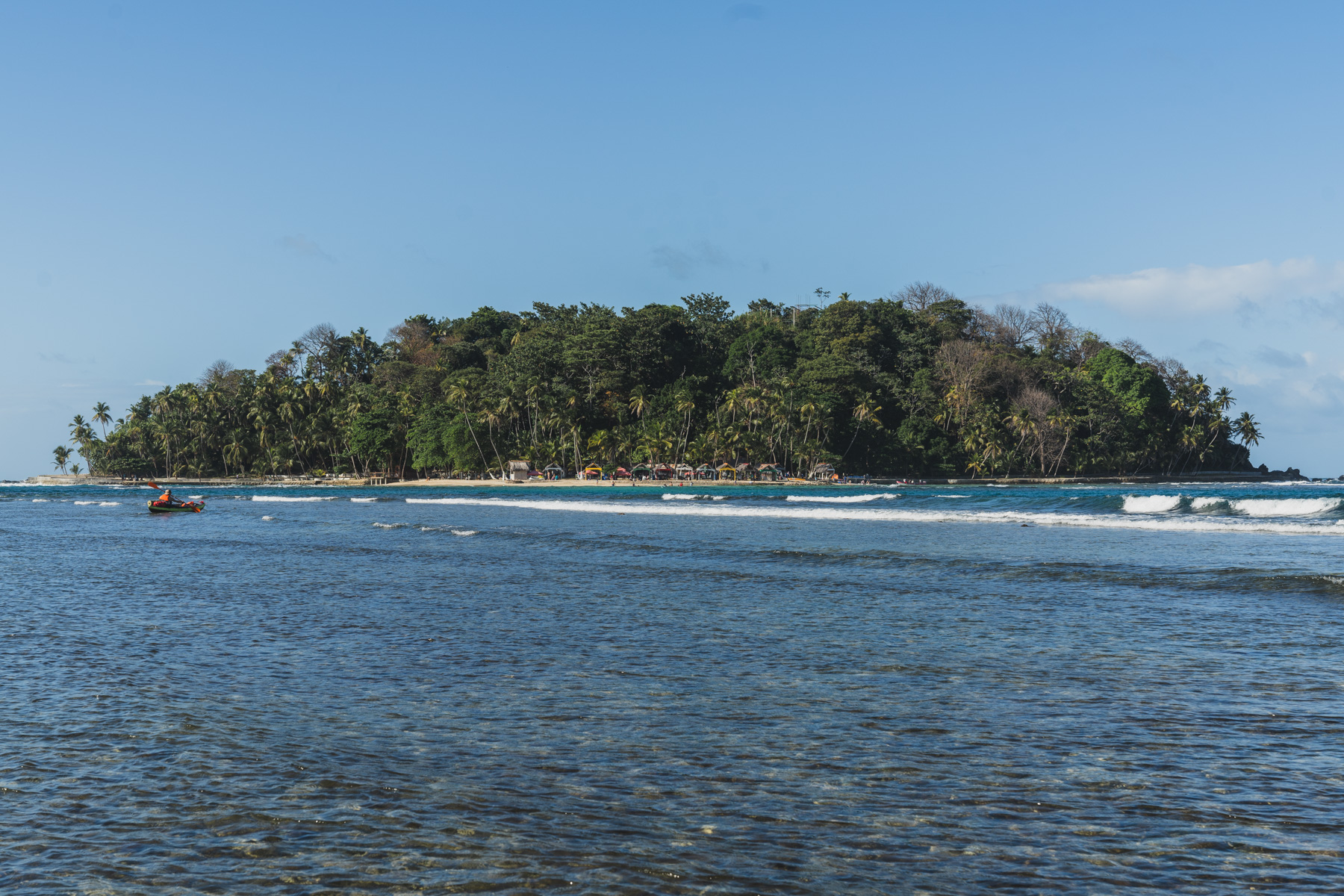
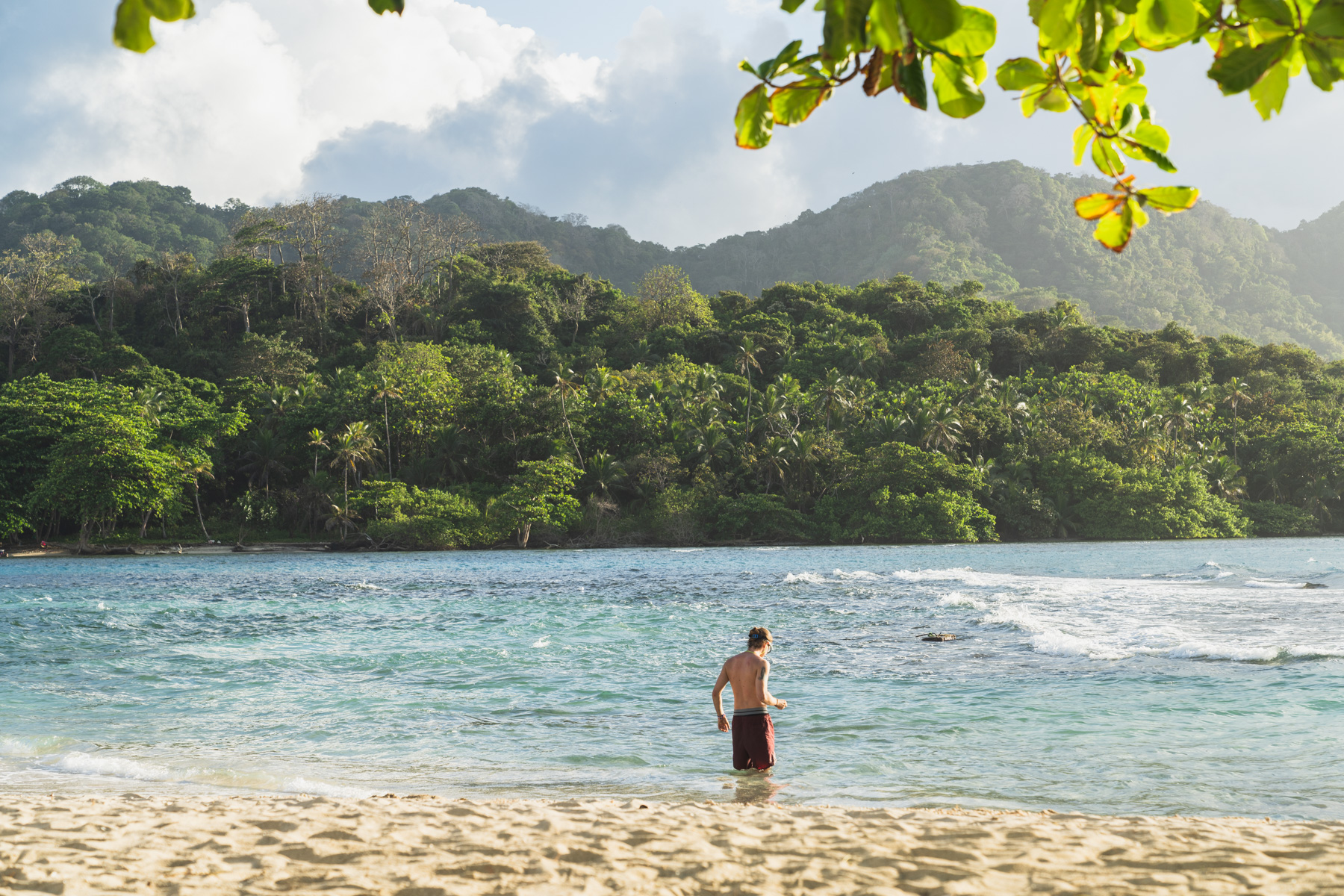
One of the things we were looking forward to on this trip was exploring islands. The region of Guna Yala has some 300+ islands with most being uninhabited. We weren’t quite there yet, but we got our first taste of island life here.
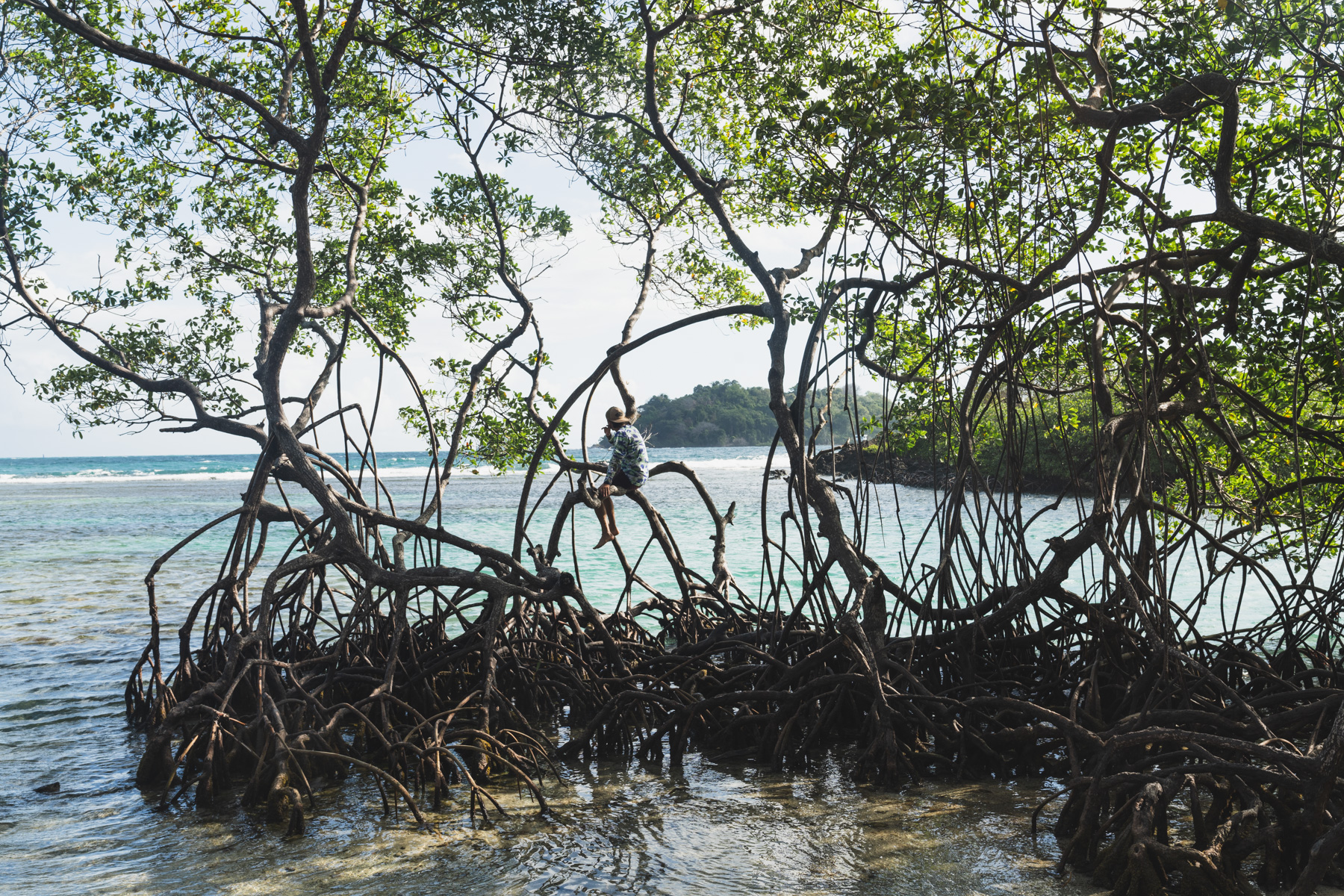
Nearby the canal, we found a good spot to set up camp. After a rough first week, we finally felt like things were looking good. We spent the whole day exploring islands and coral reefs, just as we had been dreaming for the past month.
DAY 9
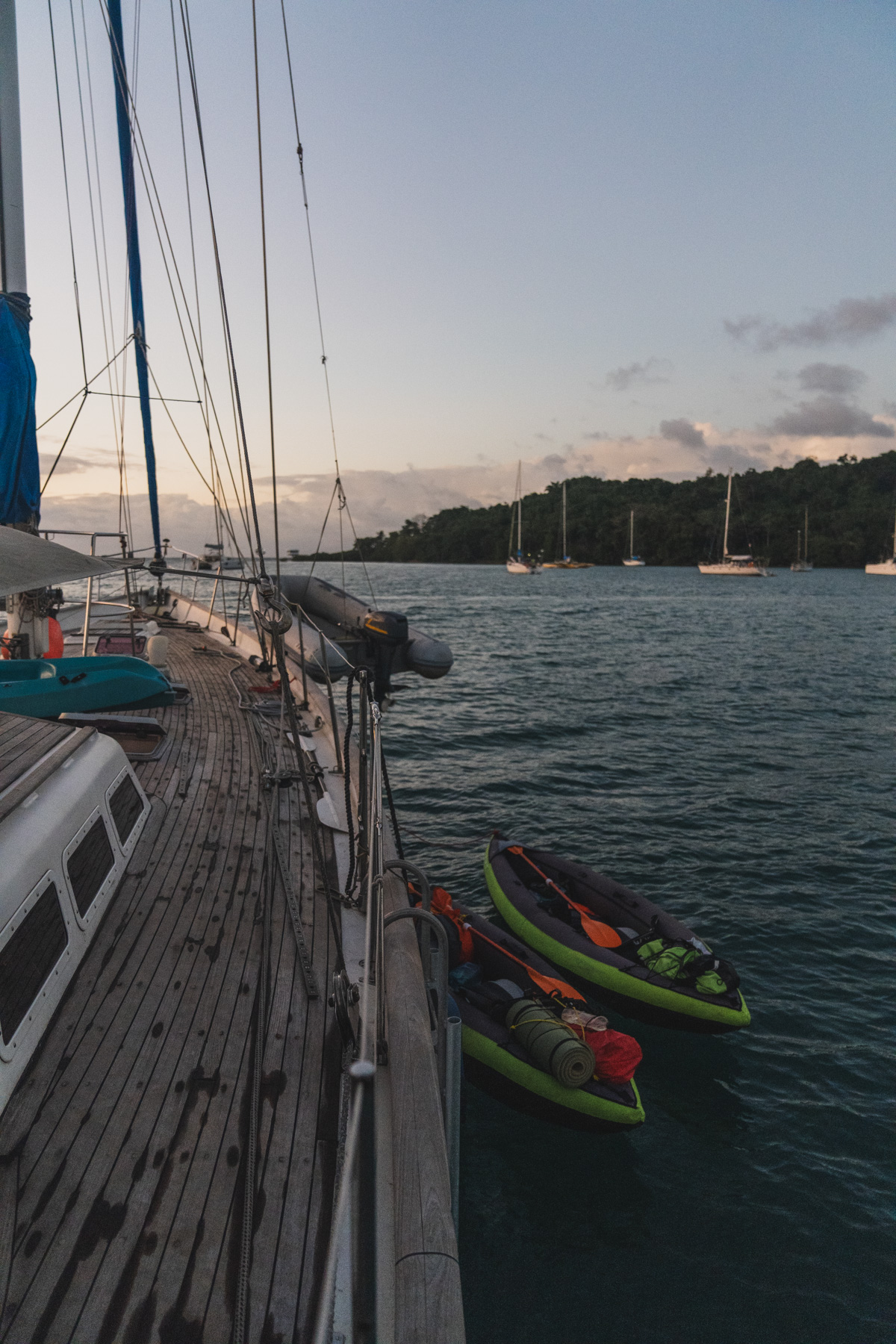
Most of the next day was spent at Linton Bay Marina where we took care of some work and relaxed. We still had time to kill until the ocean conditions improved. In the afternoon, we made our way to Mike’s beautiful 71ft sailboat. Yvonne had prepared a traditional Polish meal for us. She was polish and Kacper was as well. We had a lovely night drinking rum and sharing stories. We even got to spend the night on the sailboat!
DAY 10
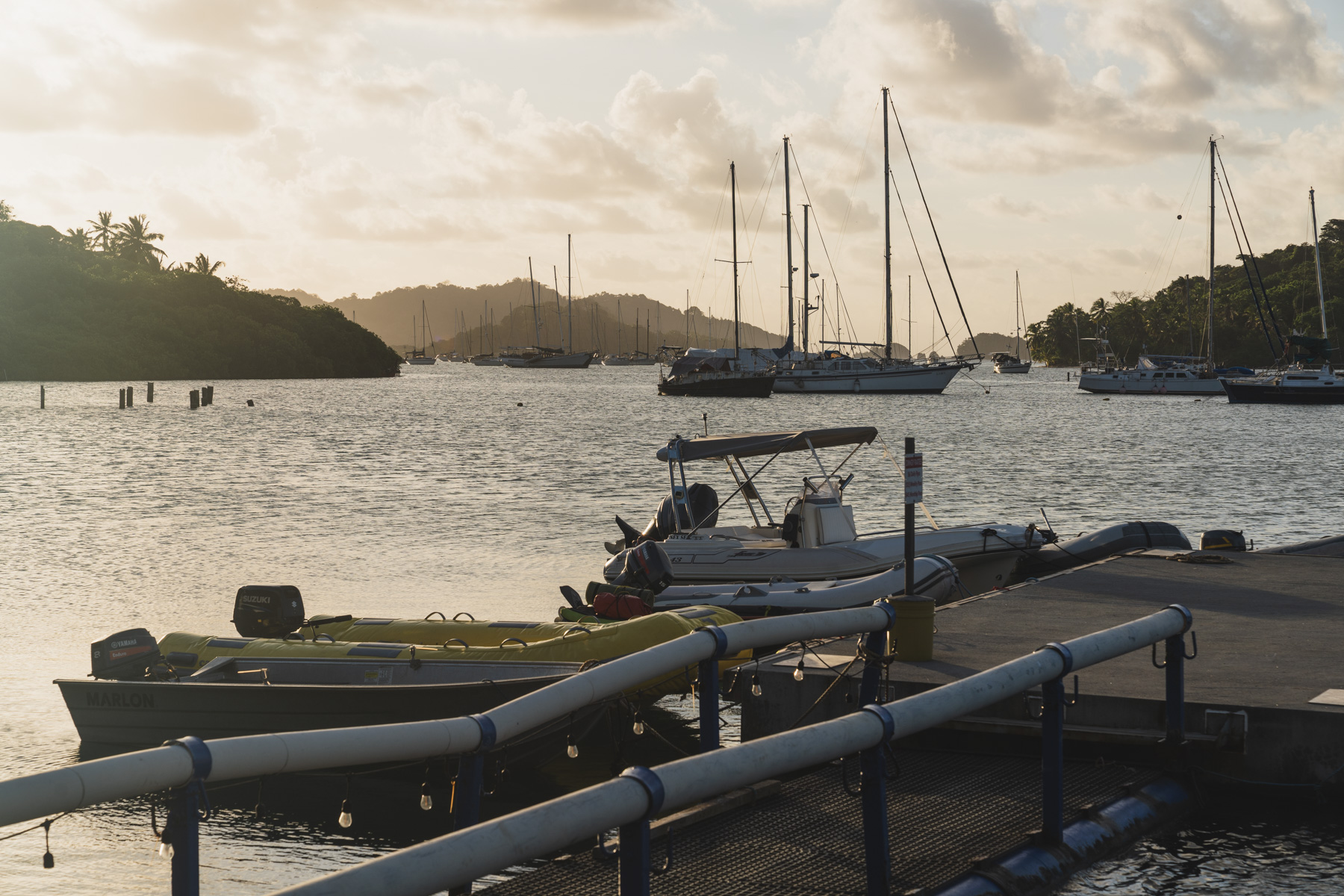
We spent one more boring day at the marina working on videos. Kacper and I took turns making reels for Instagram about this trip, I highly recommend checking them out of you haven’t seen them yet! We slept in our hammocks under the marina that night.
DAY 11
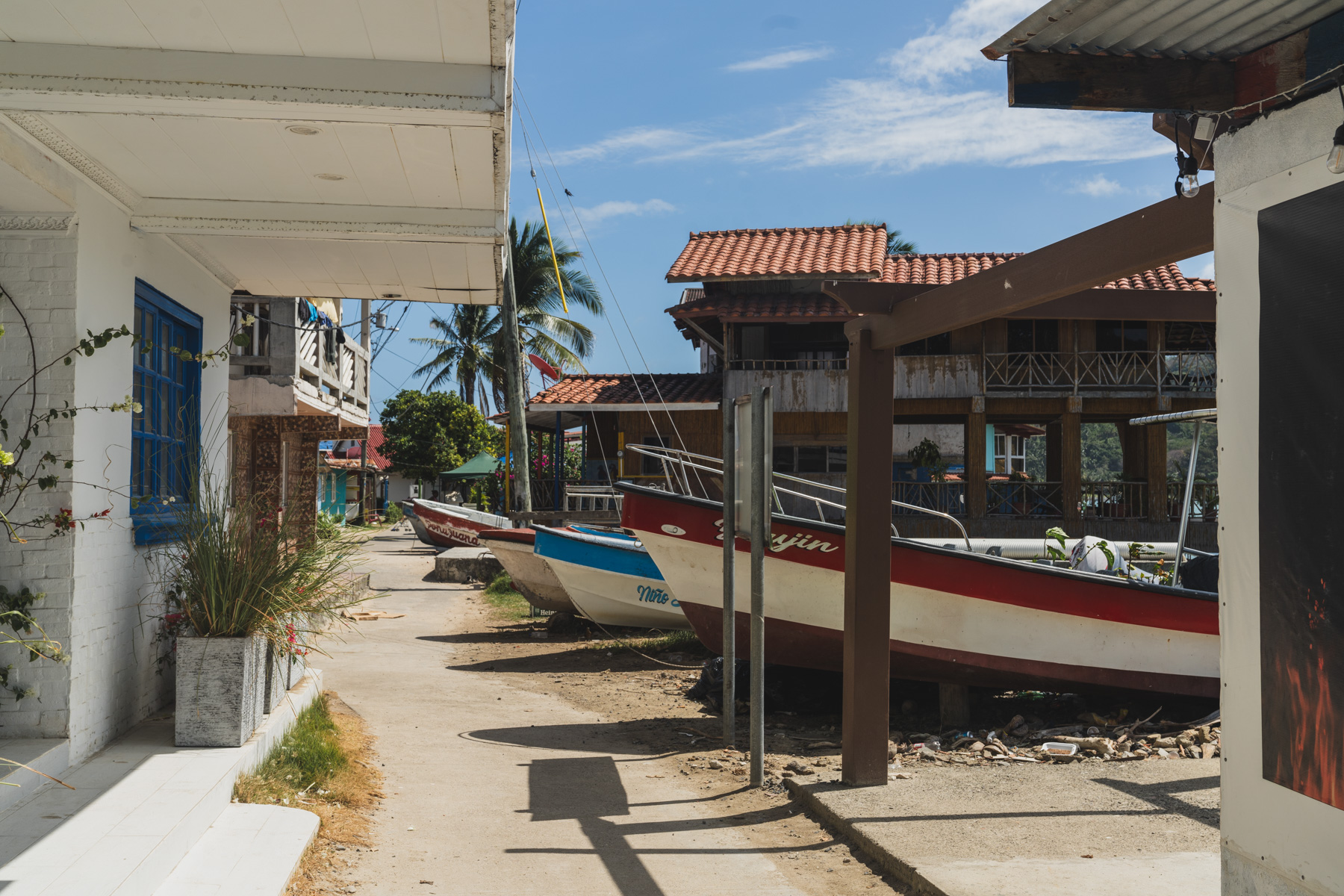
We couldn’t leave the bay until the ocean conditions improved, so we decided to go to the nearby Isla Grande just a few kilometers away. The paddle there was still tough as we had to go in a channel and fight against the current, waves, and wind again.
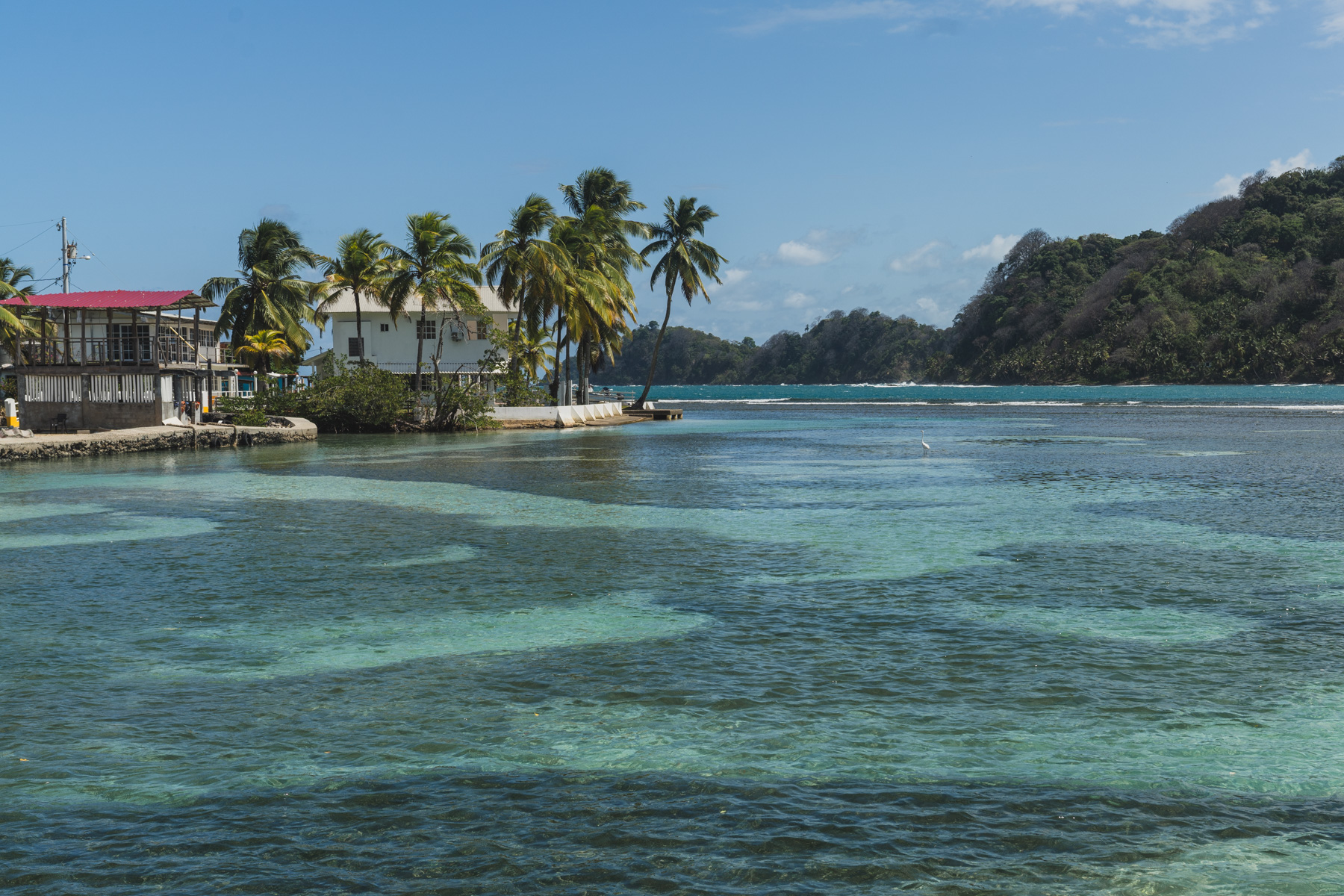
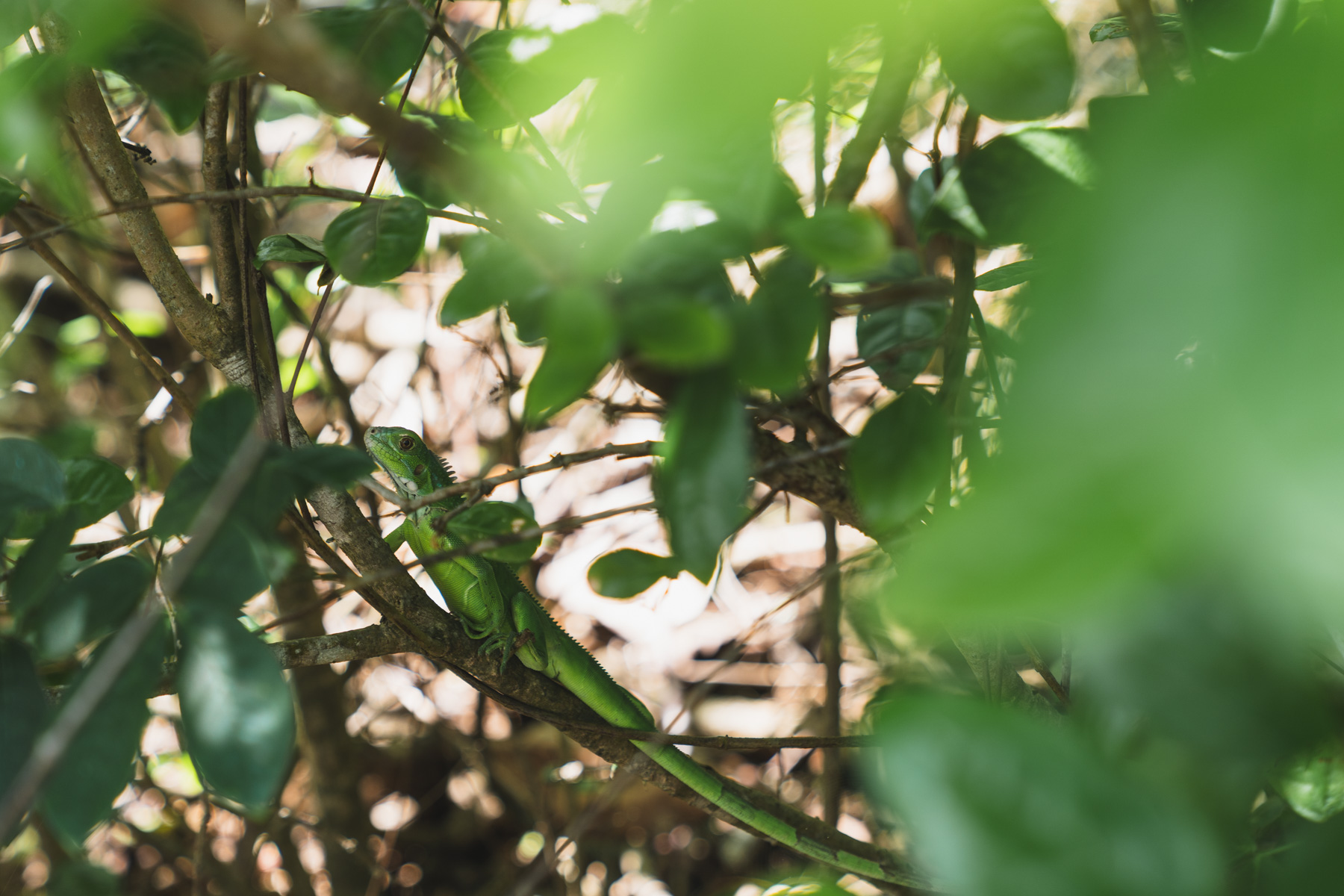
We spent the day walking around and exploring the island. Life down here moves slowly and I love it. It’s impossible not to be relaxed.
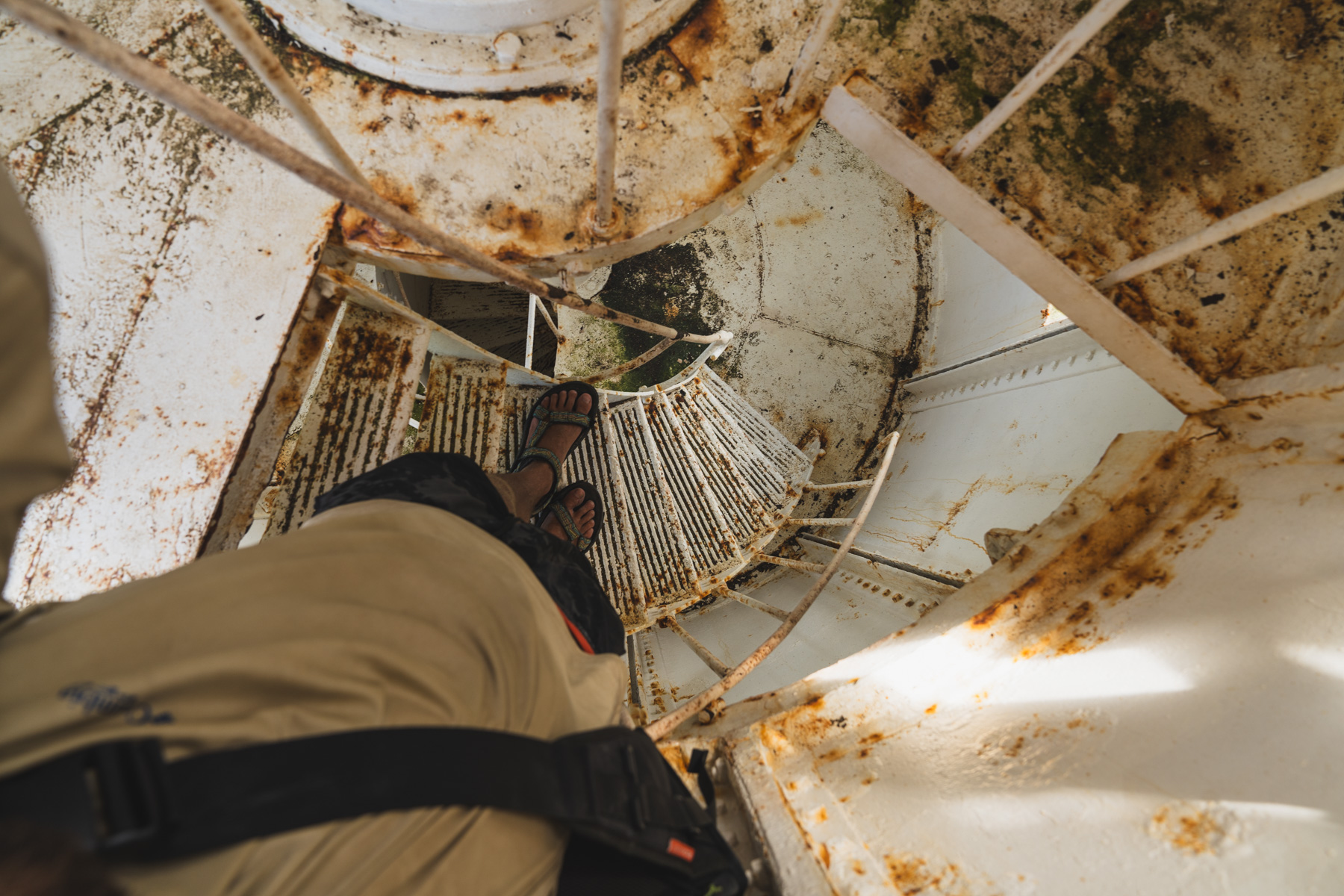
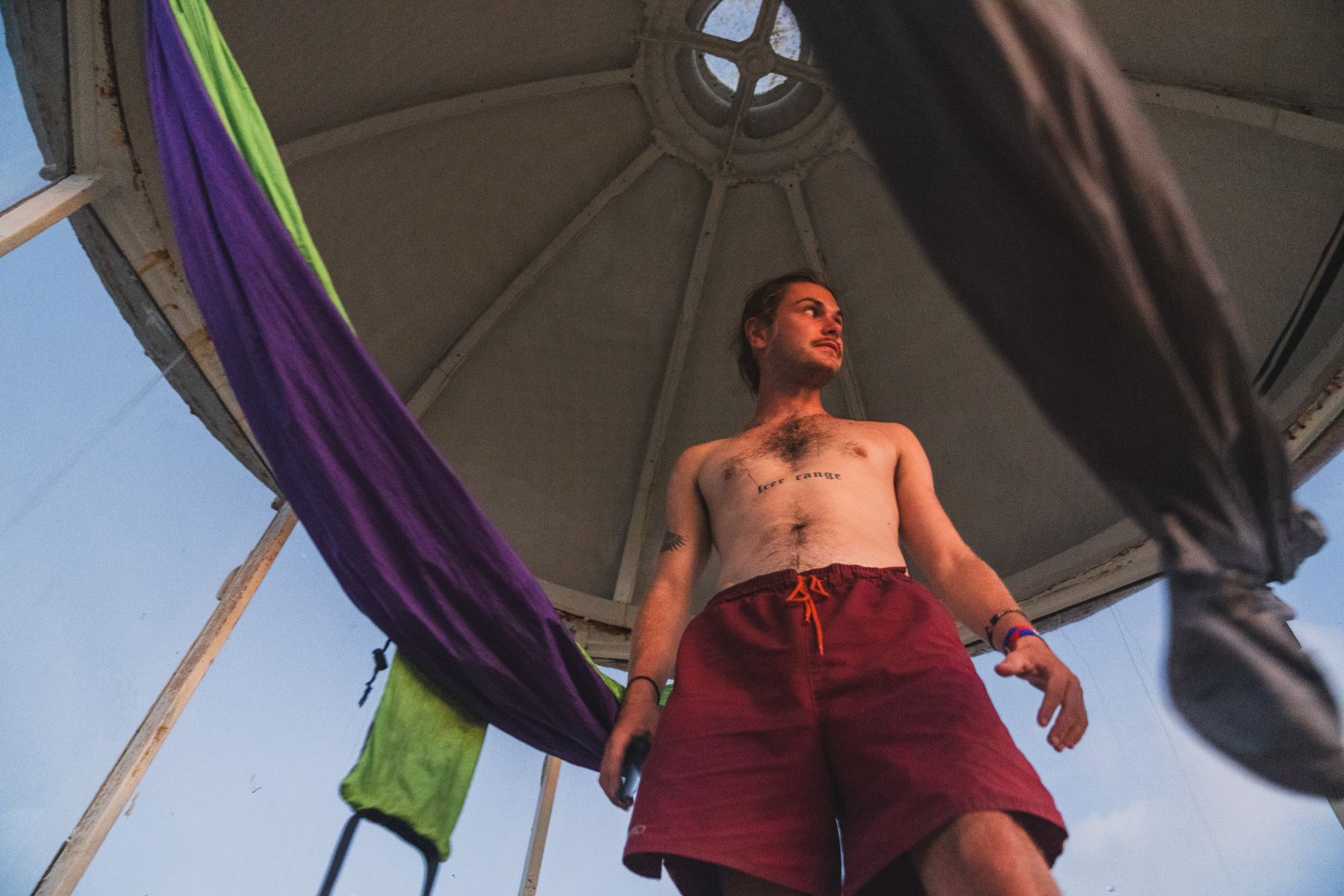

During our exploration, we found a lighthouse. The view at the top was fantastic and Kacper said it was his dream to sleep at the top of a lighthouse. We had to find somewhere to leave our kayaks overnight so we asked a nearby hotel and met a badass Venezuelan woman. She spends the rest of the day showing us around and taking care of us. She found us a place to leave our kayaks, got us some discounted food, and made sure we were good to sleep at the top of the lighthouse.
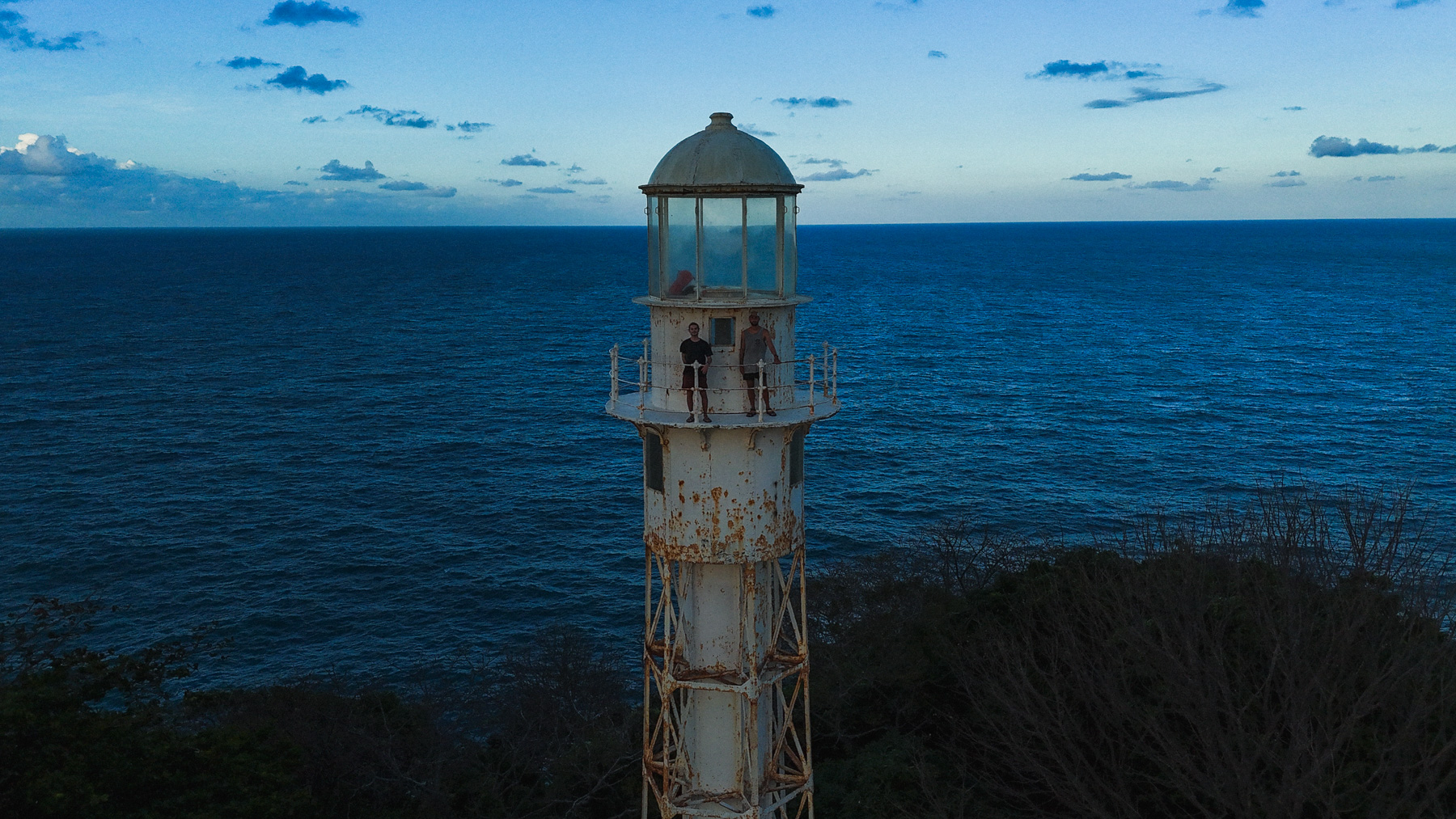
DAY 12
Today was supposed to be the last day of bad ocean conditions. We left Isla Grande and had a very tough paddle out of the channel and around a rocky point. Once we made it around the point and headed south, it was much better and the waves were helping us for once.
We stopped at a beach for a break after the tough section. There were a few small houses and a large farm. A guy walked over to us to find out what we were doing because I’m sure we were an unusual site. His name was Alejandro and was the owner of the house and the farm. After hearing our story he brought us watermelon and had one of his workers show us how to get coconuts from a tree and how to open them with a machete. After that nice break, we took off to our intended destination a few kilometers away.
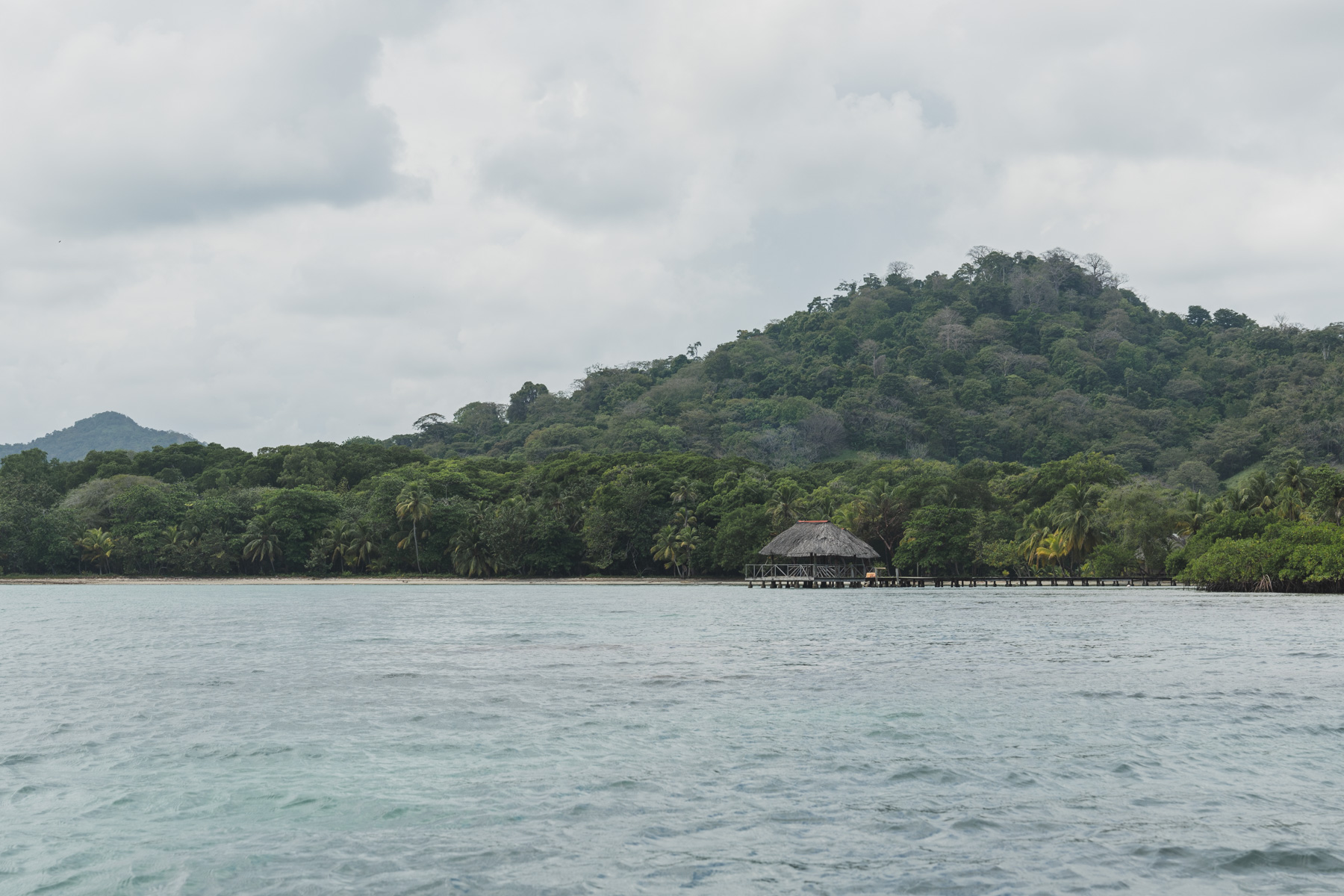
We saw on our maps that there was a beach here, so we wanted to try and camp there. We had no idea what to expect and as we got closer we wondered what this place was. From far away it almost looked abandoned as we couldn’t see anyone.
We pulled up to the beach and could see a guy being followed by about 10 dogs walk up to us. He introduced himself as Domingo. We explained what we were doing and that we were looking for a place to sleep for the night.
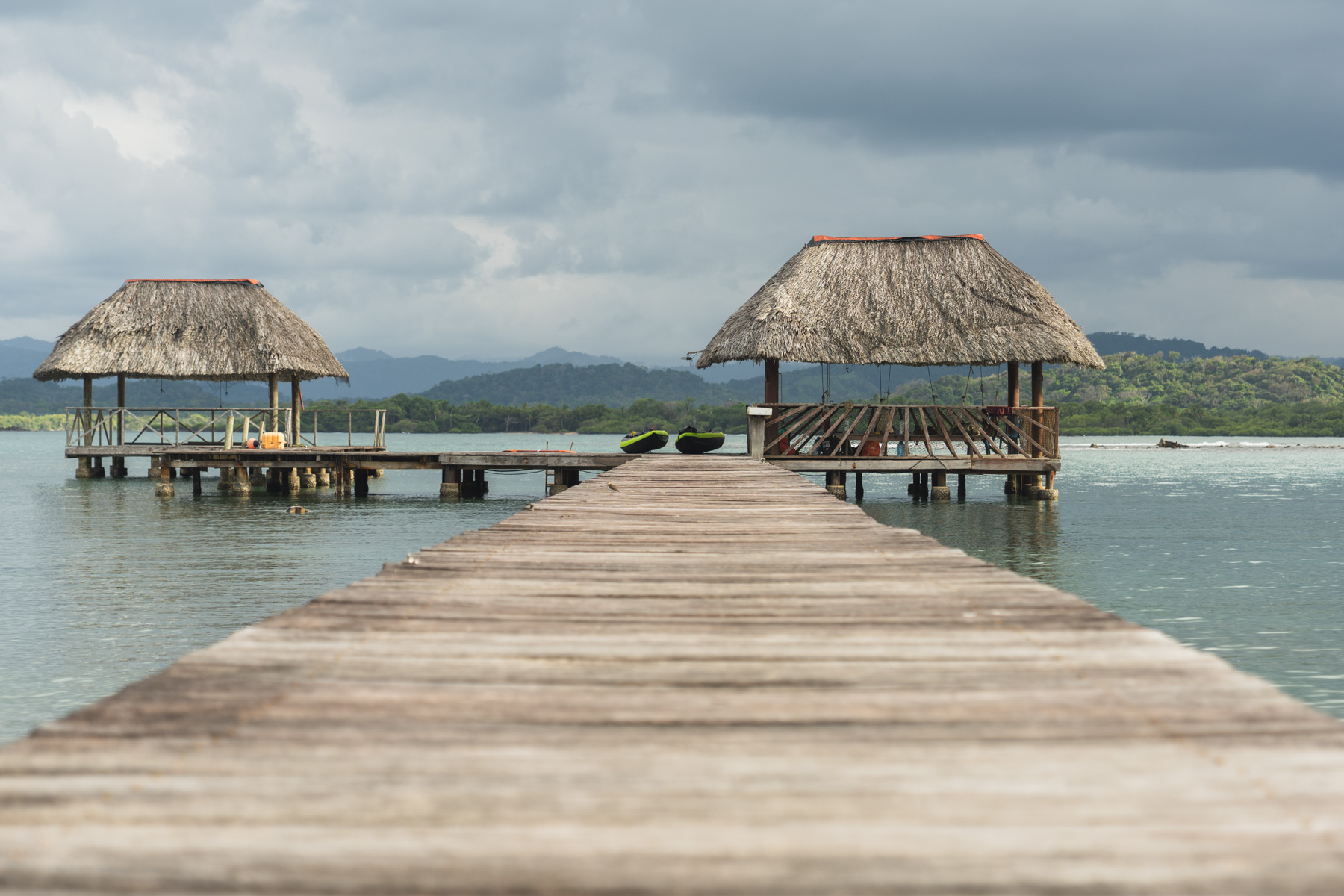
Domingo told us of course we could stay here and he offered us the hammocks on the dock to sleep in. After we got set up, Domingo went on to tell us about himself and this place. This place was called Playa Paraiso and was a hotel hidden in the jungle on a remote beach. Domingo was in charge of running the place while the owner lived abroad.
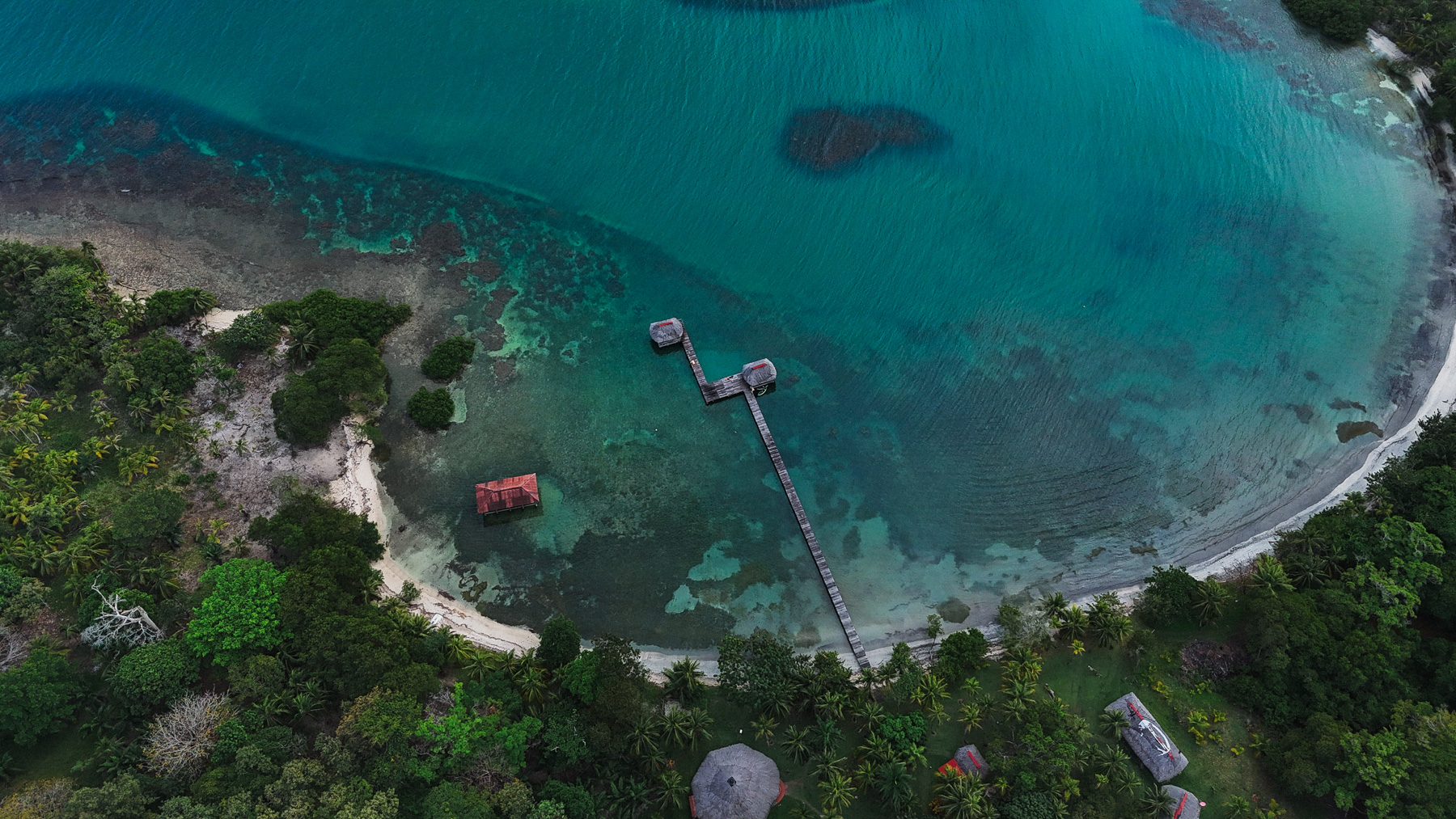
Domingo then proceeded to take us all over the property and showed us all the animals. We saw parrots, turtles, alligators, and he even told us we might see some nocturnal monkeys tonight.
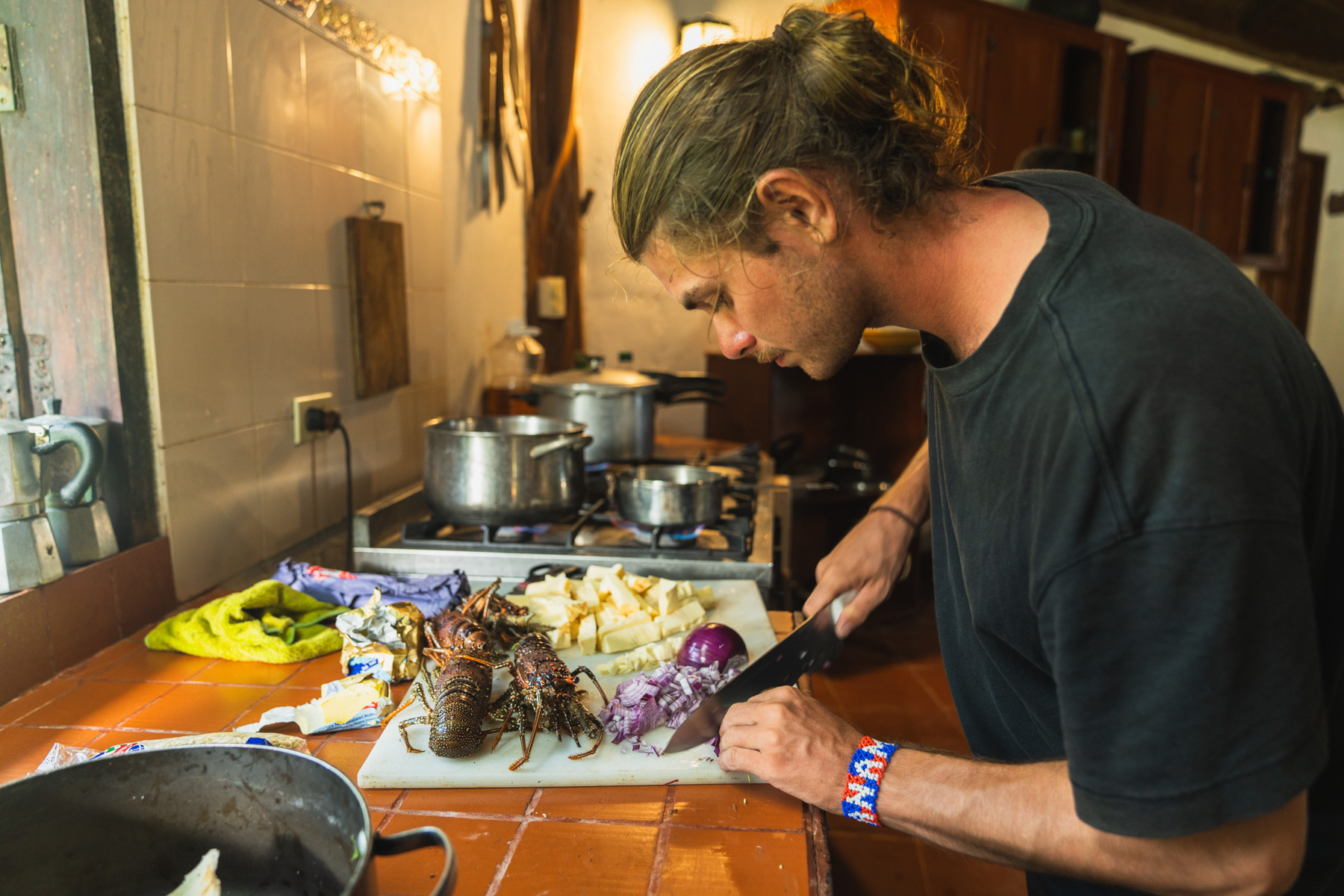
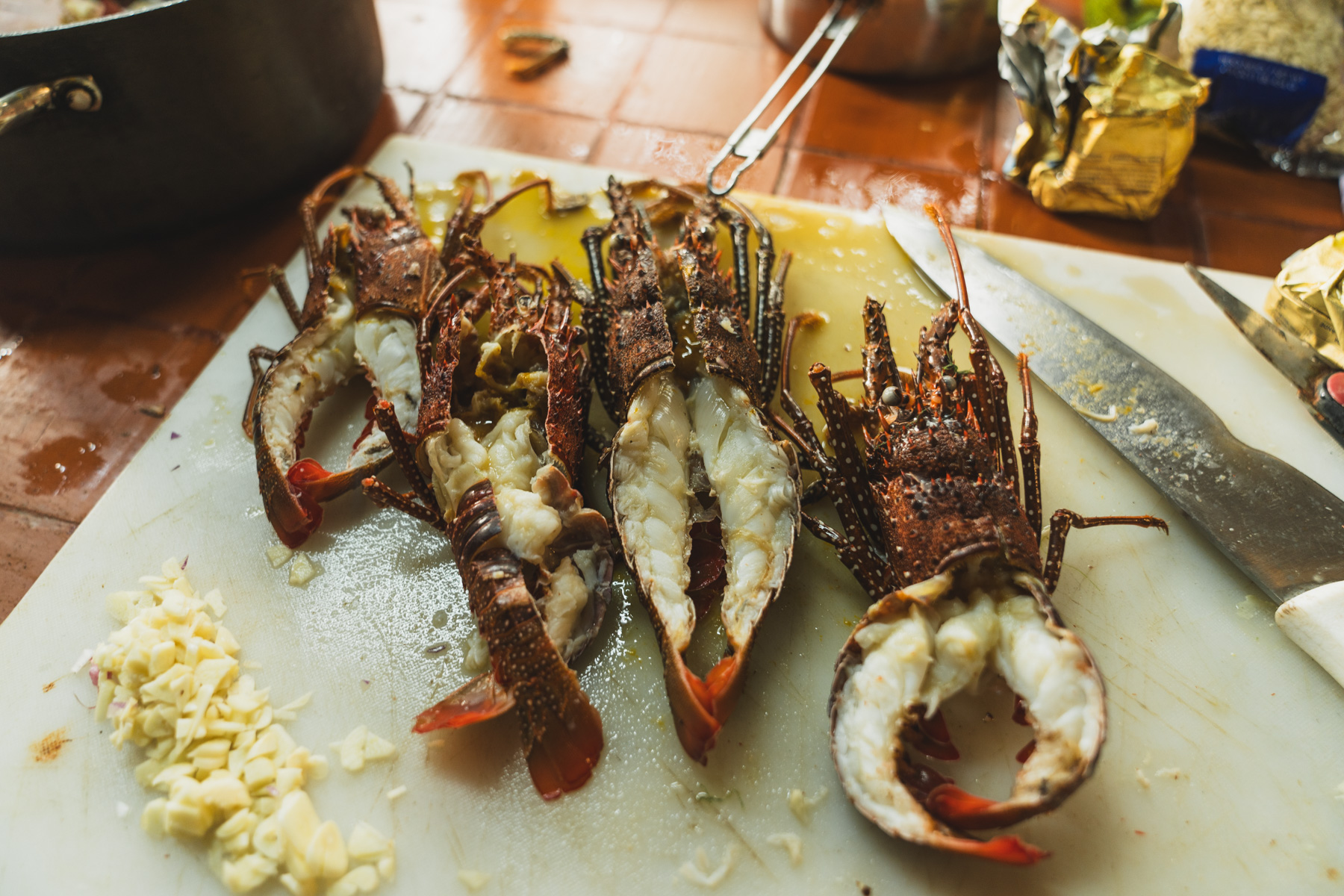
We had asked Domingo if we could use the kitchen to cook our typical pasta and lentil dinner. Domingo not only said of course, but brought us langostino (small lobster) that he had recently caught. He then taught us how to prepare and cook them. We ended up cooking a large dinner and offered what little we had to Domingo so we could all eat together. The langostino was delicious, especially with butter and garlic. It tastes exactly like lobster.
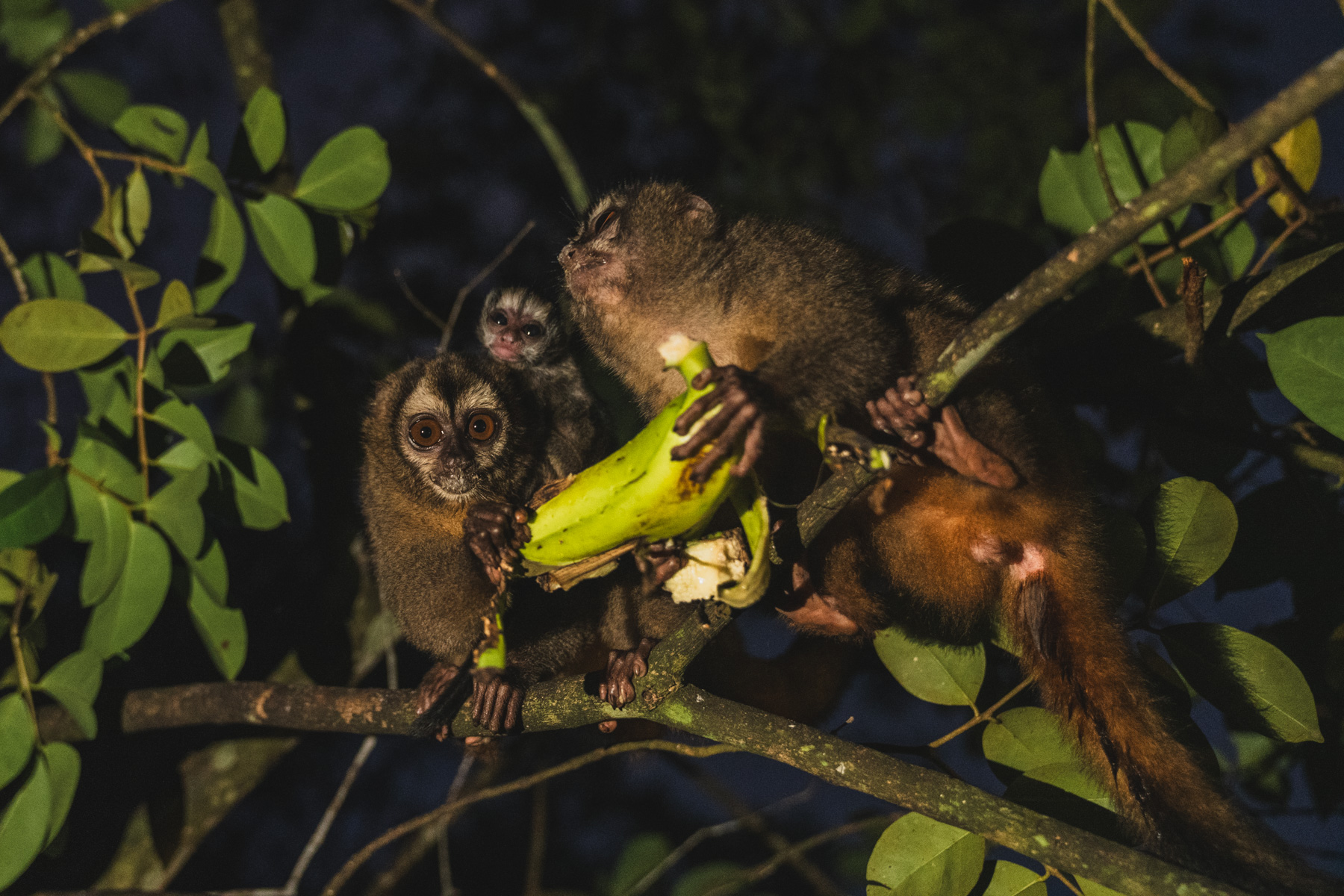
After the sun went down, the monkeys came out for dinner. Kacper and I fed them some bananas. There was even a little baby with them and Domingo said we were very lucky to see one, as its pretty rare.
DAY 13
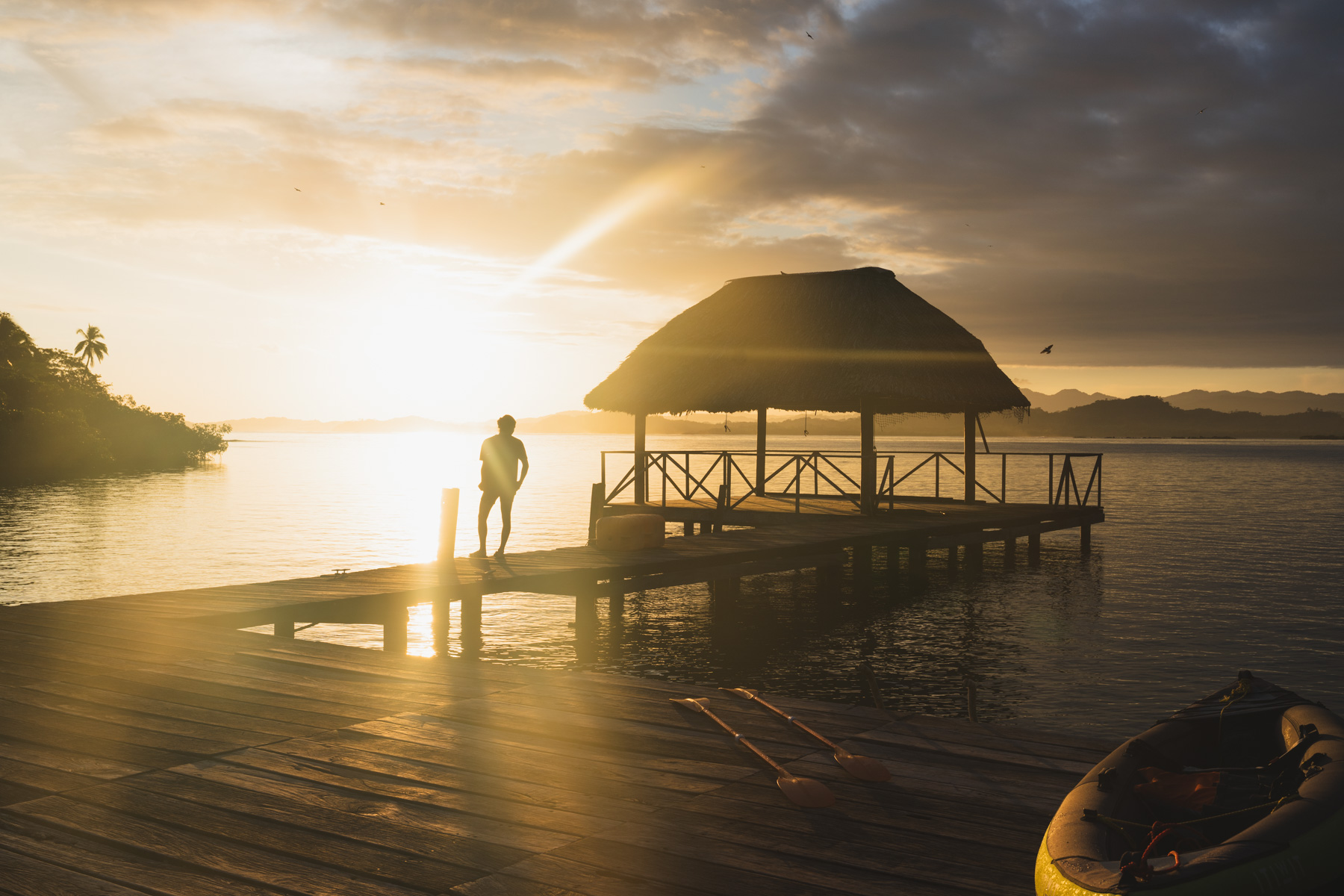
It was time to start our big push towards Guna Yala. We had 4 days of good ocean conditions to make it 70km. It would be 4 long days of paddling.
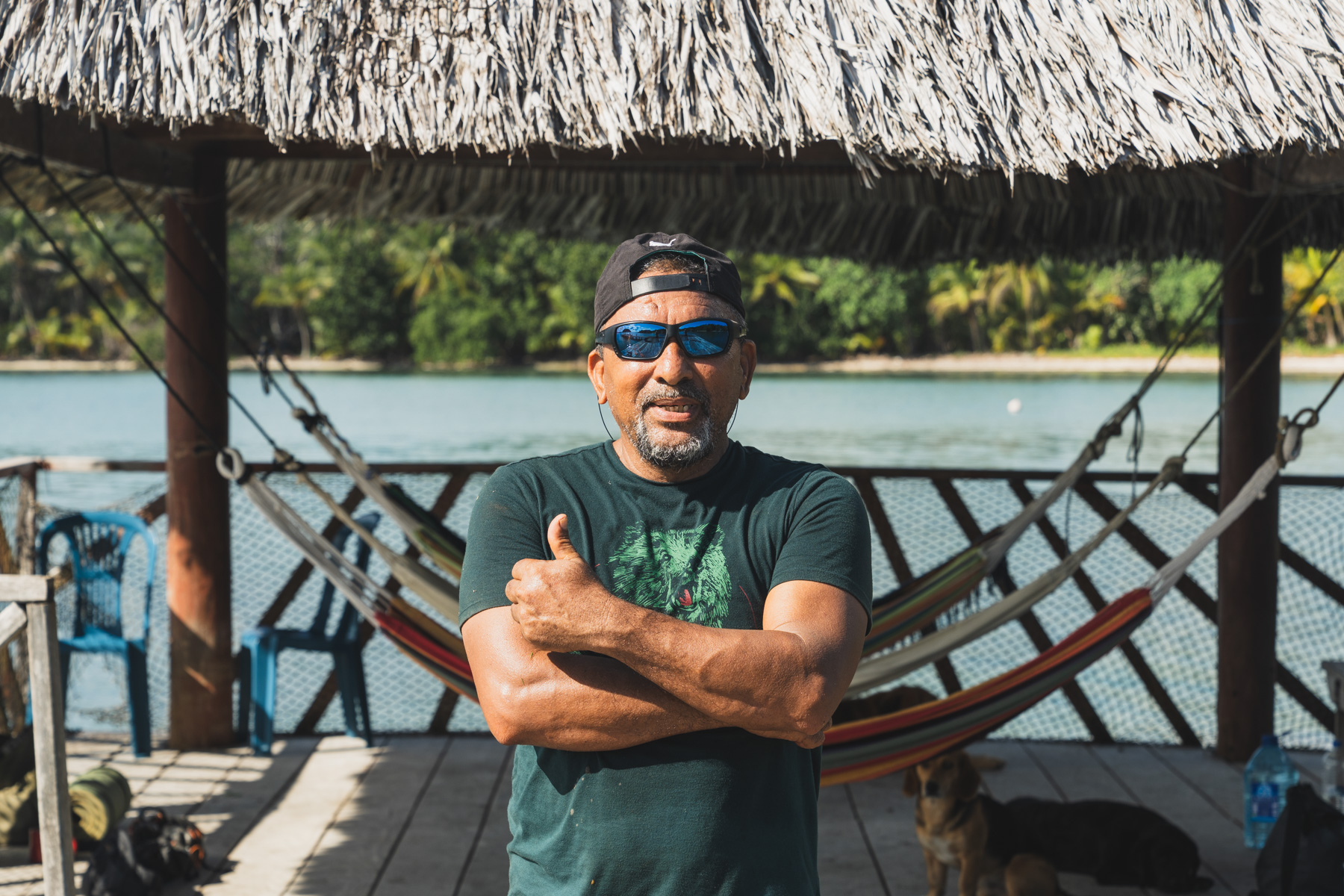
This is Domingo and it’s hard to describe how amazing and kind he was. We arrived with no clue what to expect and he shared everything he could with us. We had such a good time here all thanks to him.
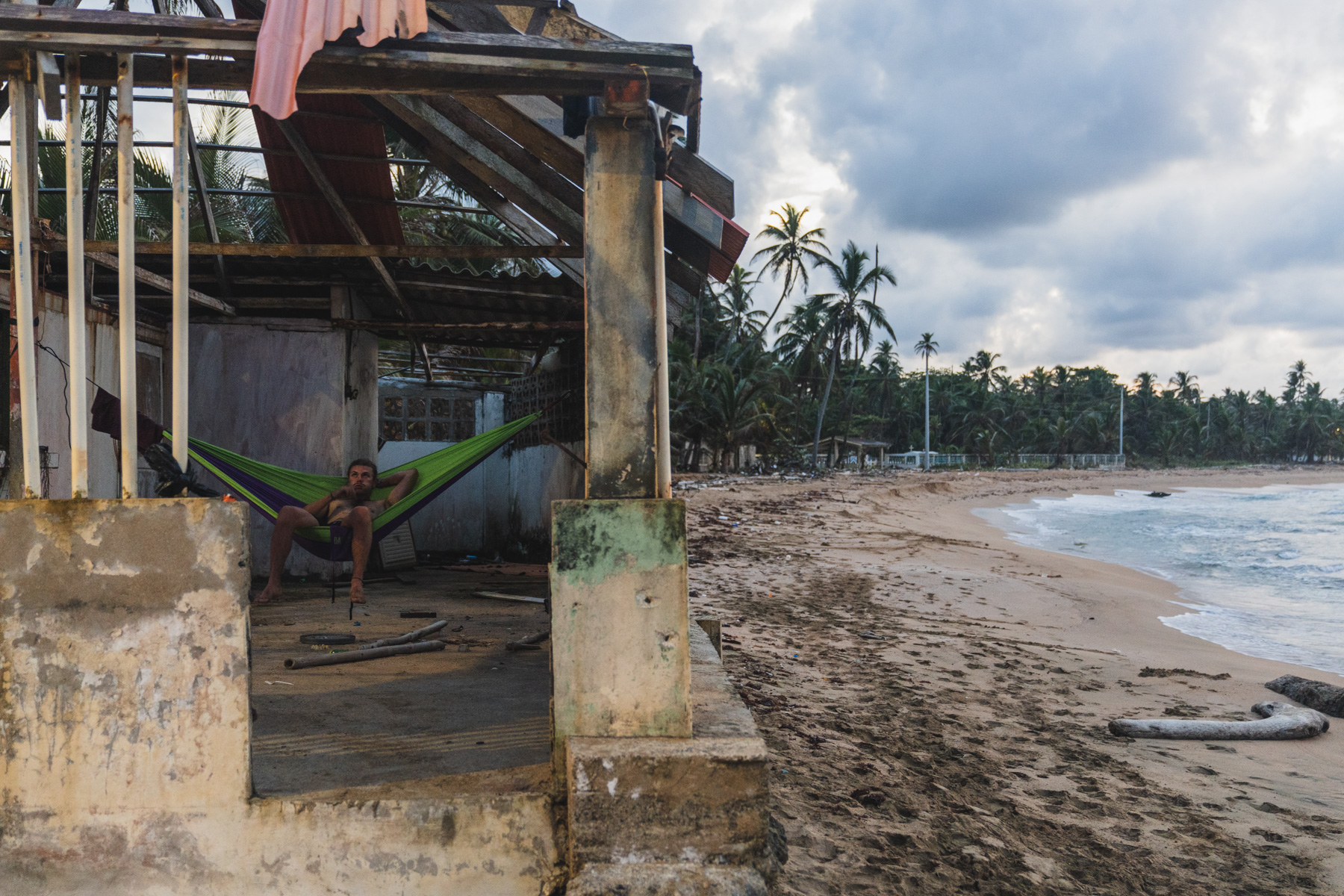
As we started paddling we were pleased to find that the forecast was true and the ocean was calm with practically no wind. We finally felt like we could make progress towards Colombia. We paddled all day until we reached a small town about 20km away. It was the most progress we had made in a day yet and more than the past 4 days combined.
DAY 14

It was a rather uneventful day of trying to get as far as we can. The conditions were even better than the day before and it started to feel as calm as the river. We finished the day after 17km in a very small town named Palmira
Before we arrived at the beach in the town, we hung out with some local fishermen in the bay. Kacper had a goal to catch a fish and the best way to learn is to ask the people who do it every day. We talked to them about camping nearby and they said it wasn’t safe and that we should go to the military station in town and talk to them.
We arrived and went to the station and were a bit taken aback at first because here in this tiny town there were these fully-geared military guys with automatic guns. They were incredibly nice and helpful and allowed us to hang our hammocks behind the station. We also found out they were here to fight the cartel running drugs and smuggling people along the ocean. We also learned that all the small boats behind the station were cartel boats that they had caught and left there as a collection.
DAY 15
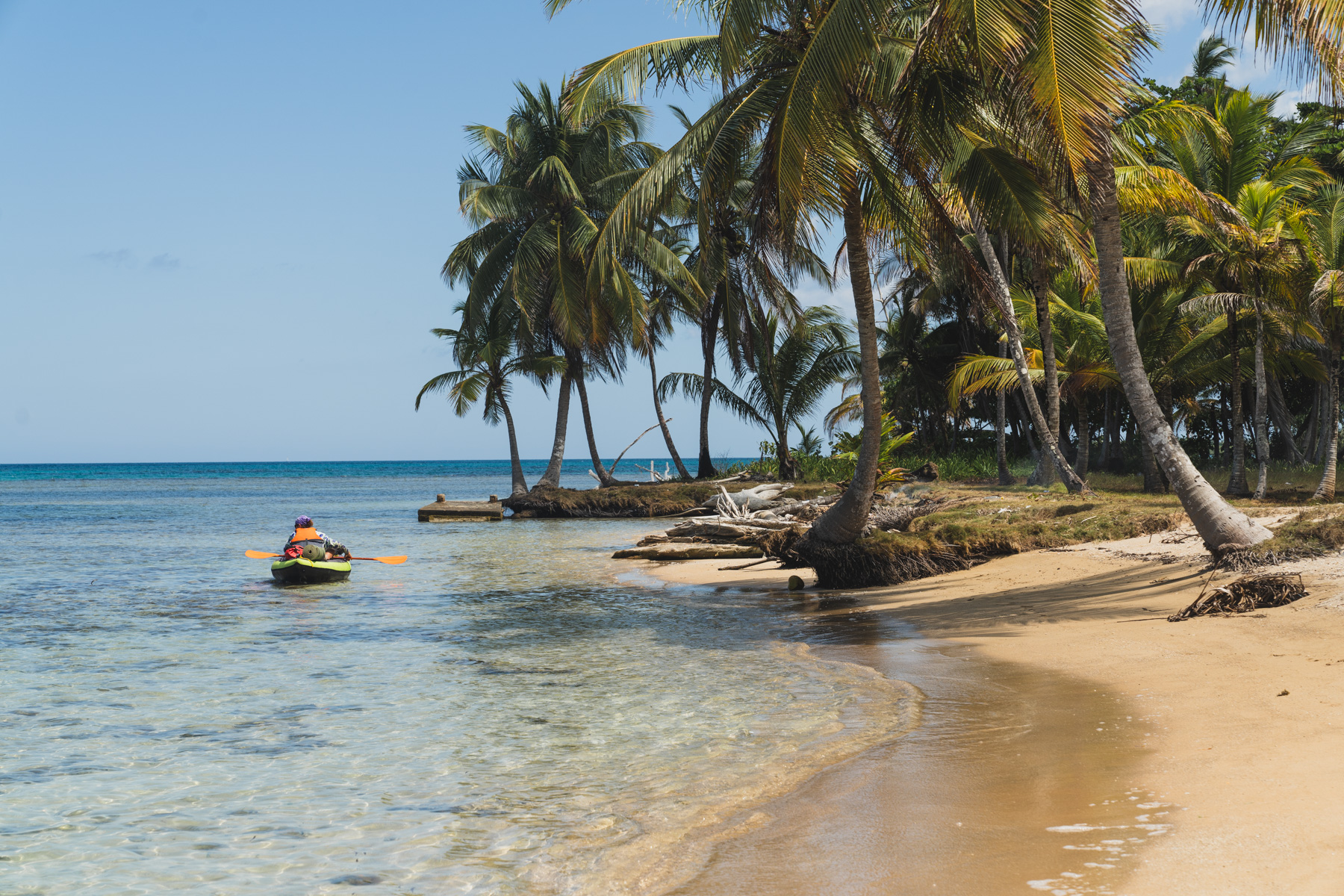
We continued to make really good progress while the conditions were perfect. The entire coastline was a tropical paradise of perfect beaches and palm trees. I usually consider myself to be someone who prefers mountains and snow over beaches and warm weather but I was falling in love with this area.
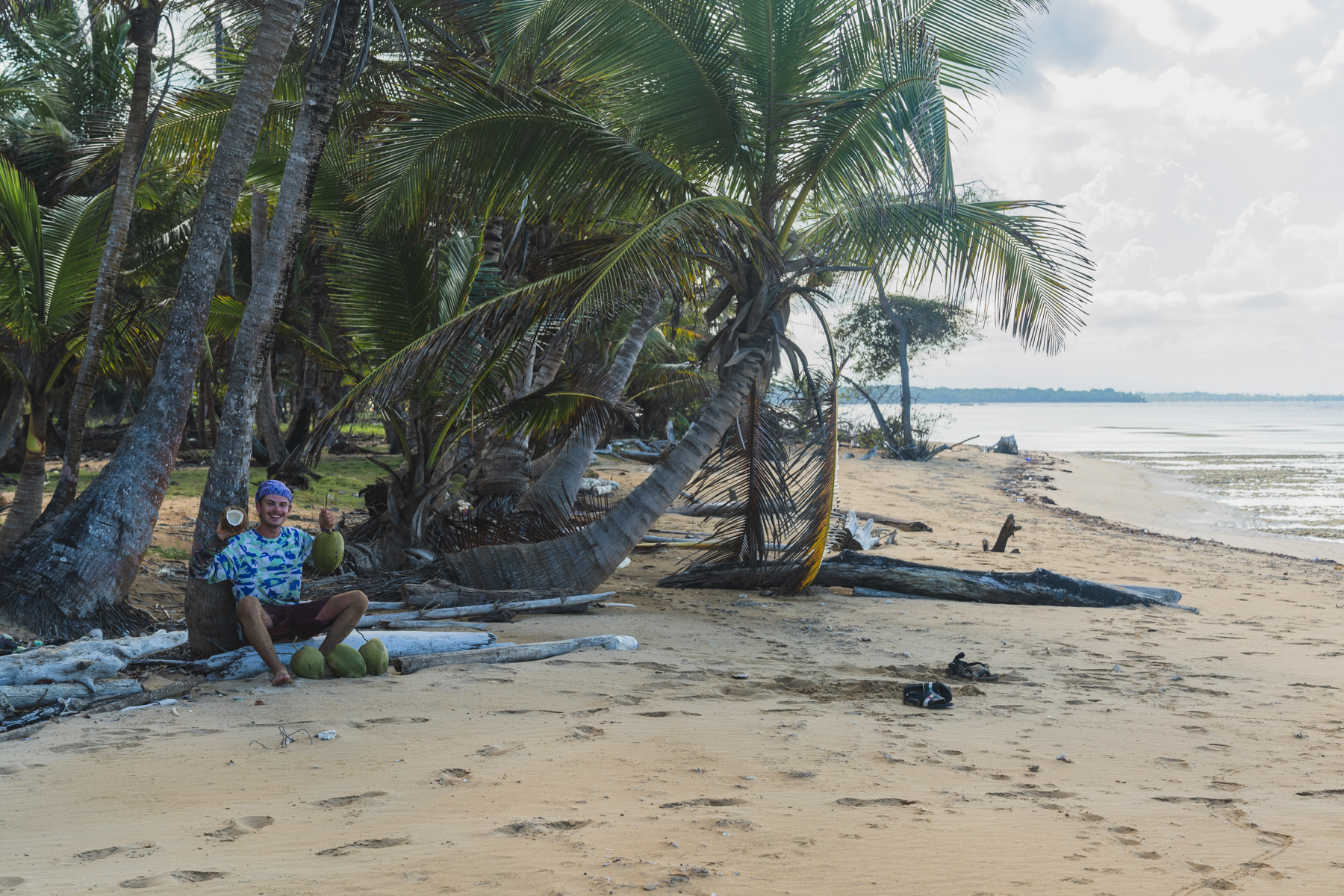
We could stop anywhere and help ourselves to the countless coconuts littered along the coast. We weren’t very good at first at getting them from the tree and opening them. We started by throwing whatever we could find up at juicy-looking coconuts until it fell, and then we would smash the coconuts on rocks until we could get them open. Kacper especially enjoyed this.
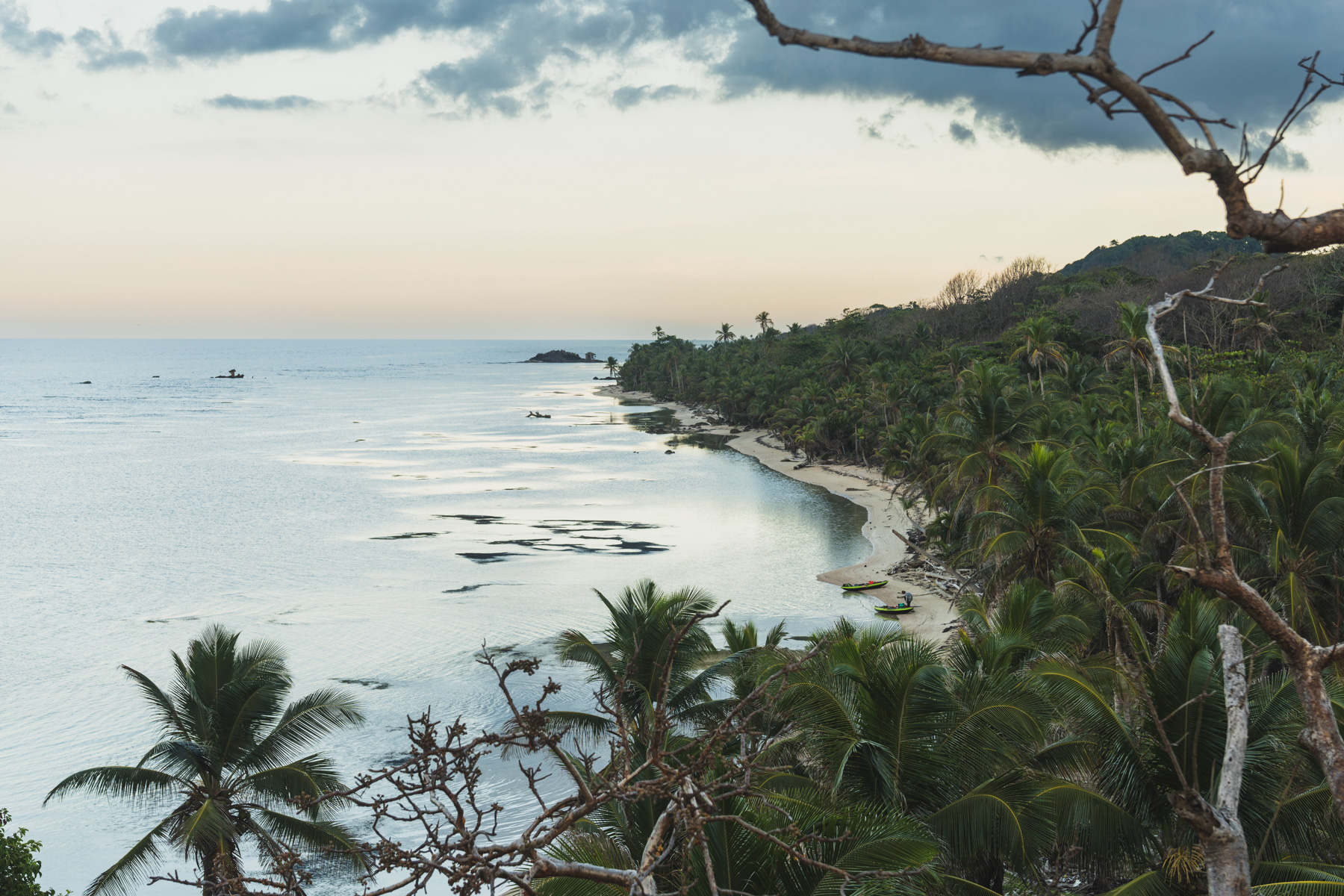
At his point on the coast, we had passed the last towns and roads that existed. We were paddling along a very remote section of the jungle until we reached Guna Yala. Near the end of the day, we noticed a palapa on the beach with two people in it. They waved at us and called us over. We were tired and ready to stop, so we thought we would go see what these guys were doing all the way out here.
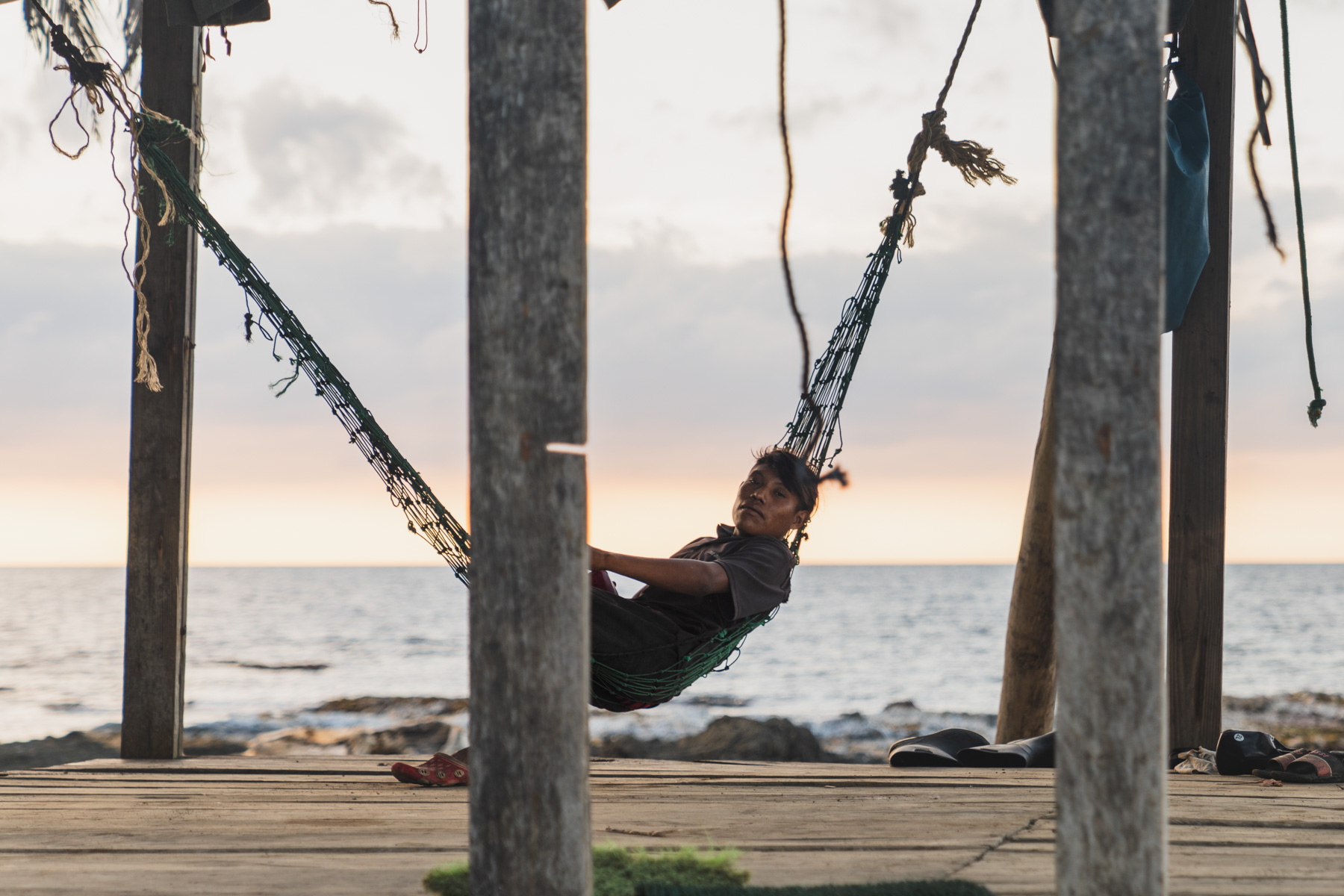
We were introduced to Narciso and Jackson. They let us know that we had just crossed the border into Guna Yala and that they were Gunas. Kacper and I were extremely excited as this region of Panama was the main reason we were out here kayaking. They told us that they are from the island community of Wichu Wala and that this is their farm. People from the community take turns working out here on the farm for a few days at a time.
Guna Yala is the region of about half of the Carribean coastline of Panama to Colombia. It belongs to the Guna people and they are indigenous people independent from the Panamanian government. They had fought for their freedom from Panama nearly 100 years ago when their culture and customs were at risk. Coincidently enough, Narciso told us that the month of revolution had just begun and that the entire month we would be traveling through Guna Yala would be a time of celebration and remembrance.
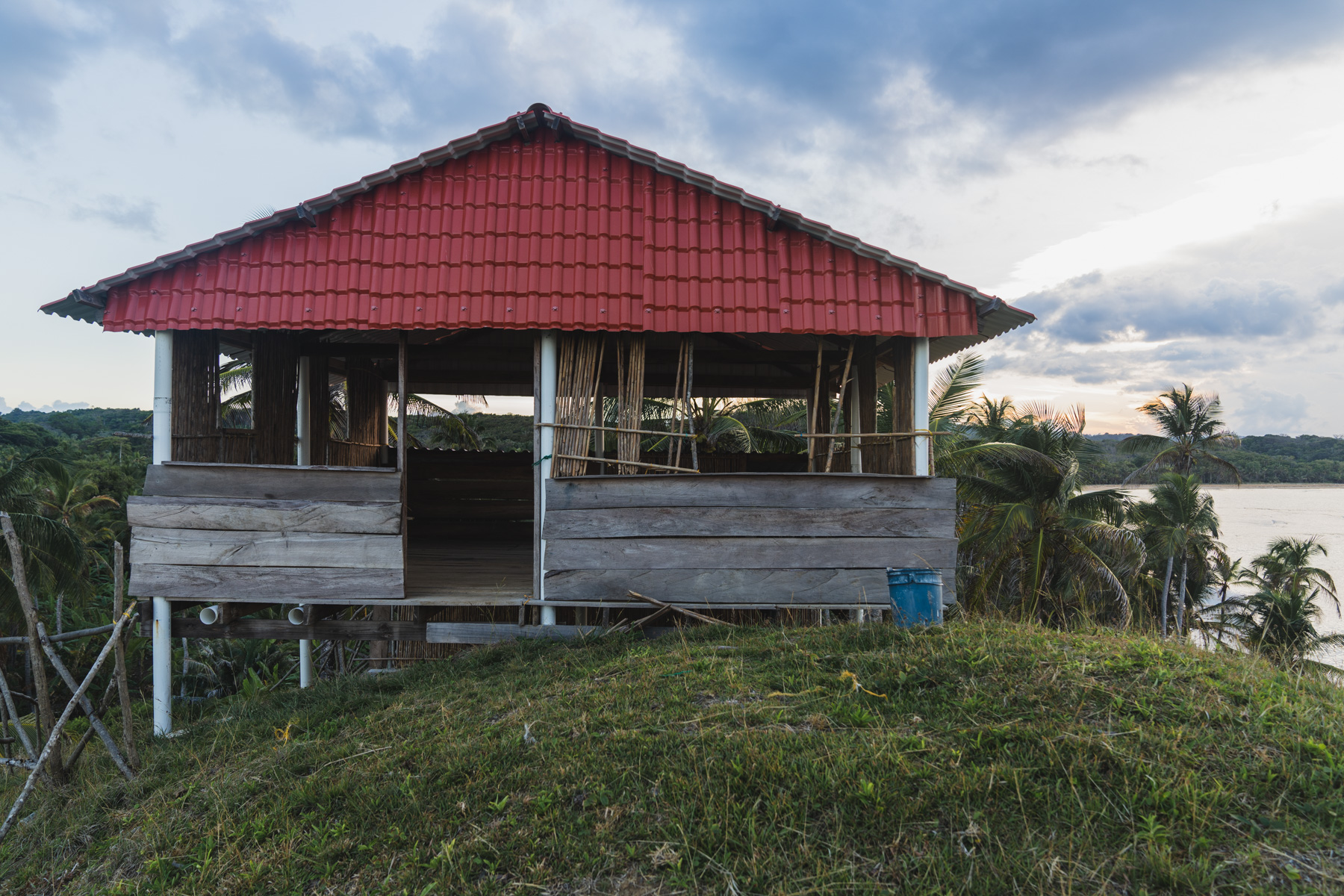
Narciso proudly showed us around the farm that helps feed his community. Here, they grew plantains, coconuts, mangos, and a few other tropical goods. We asked him about where would be a good place for us to sleep and he offered us a cabin on top of the mountain. It had a beautiful view but he warned us that the bugs get very bad when the sun goes down.
While Kacper and I were setting up our stuff in the cabin, the sand flies came out. They are one of the most annoying bugs I’ve ever encountered. They were biting me all over my body and I felt like I was going insane. There was no escaping them. A little while later Narciso came up and he invited Kacper and I to come join them for dinner.

Two other Gunas, Juan and Michael had returned from their trip along the coast looking for food. They had brought back tons of sardines they had caught and they wanted to share with us. While we watched them prepare and cook the food, Narciso shared a lot about the history of Guna Yala and their revolution.
Over 100 years ago, Panama and Colombia were one country and the Gunas were able to live peacefully with their customs under Colombian rule. When Panama declared independence in the early 1900s, the Guna territory was now part of Panama. The Panamanian government saw the significance of this region and began to attempt to take control of the Gunas by enforcing laws against their culture to assimilate them into Panama. This included bans on their traditional clothing and forced them to wear Western clothing. This created lots of conflict that slowly grew until 1925 when there was a revolution that resulted in 27 deaths. After the revolution and with help from the US government, peace was achieved and the Gunas could continue their way of life.
The help of the US government was quite interesting to me, and I liked learning about it. Richard Marsh, an explorer from the US stumbled upon the Guna people and he grew a fascination with them and their culture. He learned of the struggle they were facing against the Panamanian government. To help, he took a group of Gunas to North America and helped gain support from the US and Canada. Marsh became a spokesperson for the Guna and even assisted in writing their independence. Given the bumpy track record of US politics in Latin American government, it’s nice to learn about something like this.
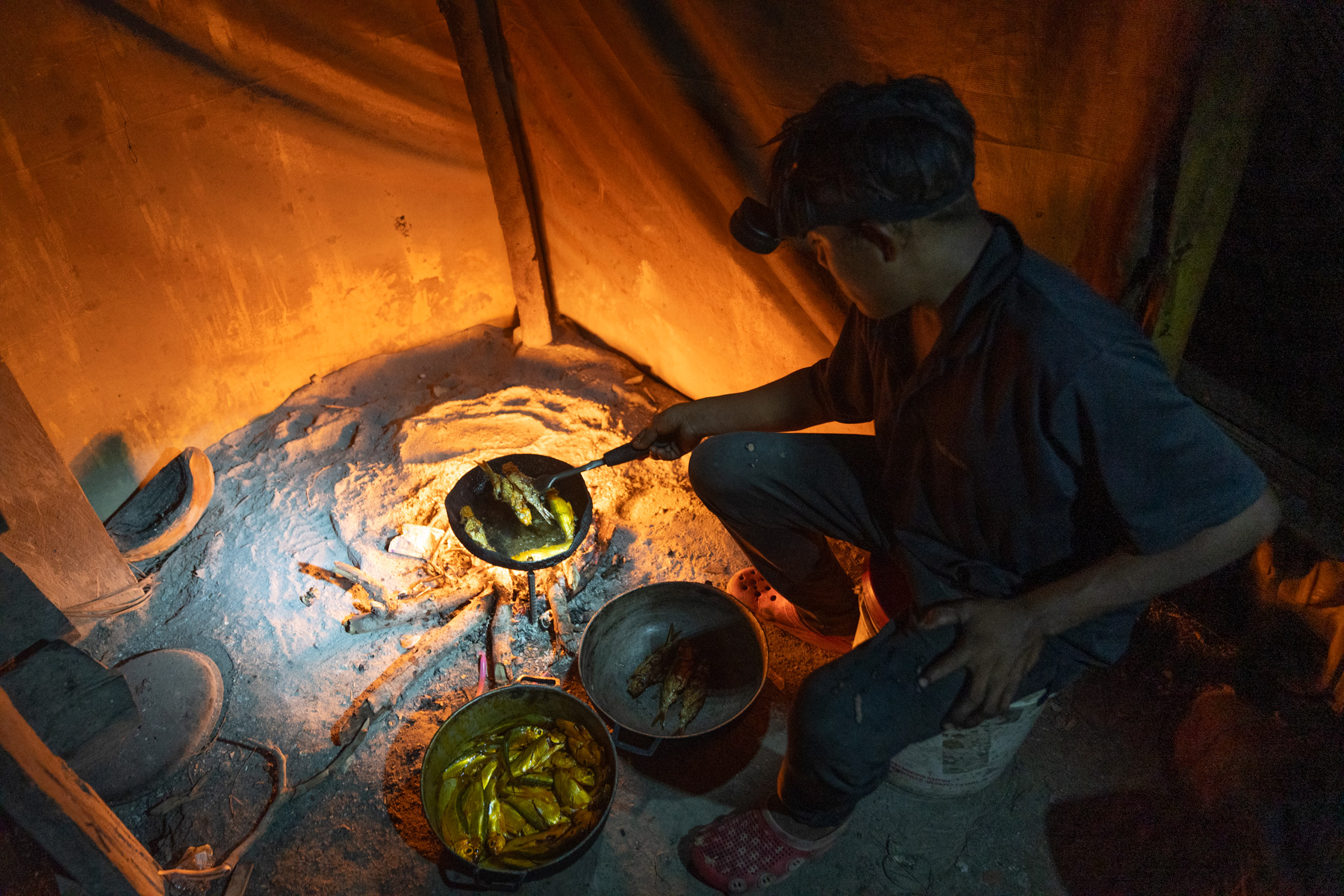
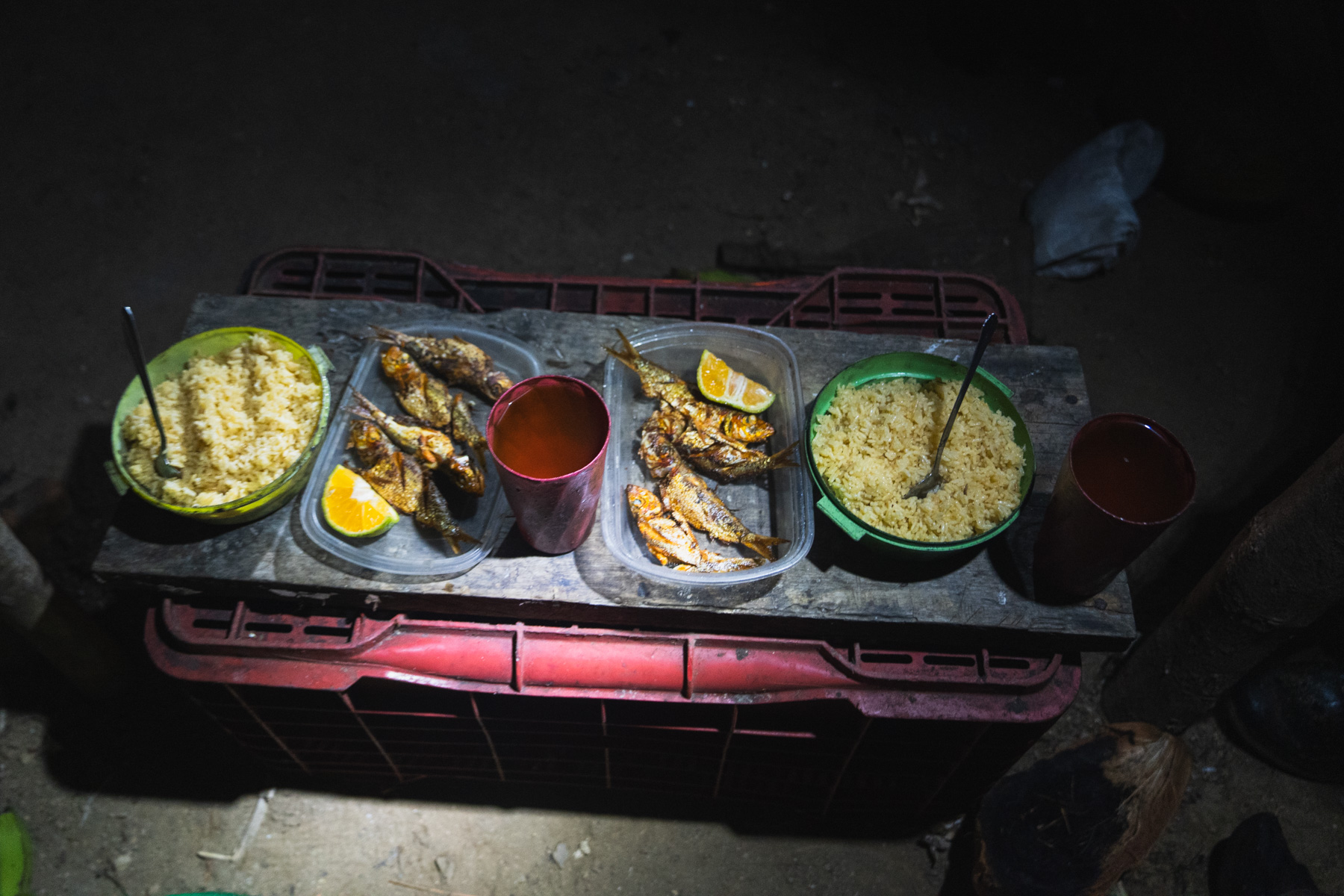
After our history lesson, it was time to eat. They really took care of us and set us up a table and made sure we ate first. It was such a kind display of humanity and Kasper and I were honored. They made sure we were full and kept giving us more and more fish until we had to refuse. After we ate Kacper and I returned to our tents where we struggled against the sand flies who would make their way into the tents and bite use all night.
Kacper and I were originally pulled to this region due to the natural beauty of the uninhabited islands and beaches. We knew very little of the Guna people but after our first experience with them, we wanted to learn as much about them as possible. Even though it may have been the worst time of the year weather-wise to do what we were doing, it was the best time of the year to learn about the Guna people. During the month of the revolution, they display their culture with great pride.
I’ll end this part of the blog here. When I continue we will enter the San Blas islands and see a level of island paradise we had never experienced before. I hope you all enjoyed this blog as I think it is one of my favorites yet. What is to come in the next parts will only get better, as well.
I apologize to all of you who have been wondering about me as its been a very long time since my last update. I have been good and well. After finishing this kayak trip, I hit a real low point biking through Colombia alone. Motivation was at a low and I had a mountain of photos to go through that I had trouble starting. Right now, I’m back stateside to see family and go to a wedding. I hope to get caught up on my blog so expect the next parts soon. I will return to Quito, Ecuador at the end of June to continue biking to Ushuaia.
9 comments
Gerrit Hoover
Loved the story brotha, almost feel like I’m there with ya. Keep them coming!
Joe Wiggins
I look forward to each of your posts! Thanks for sharing your experience with us all! We are better for it! Joe
zach
Thanks so much Joe!!! Means a lot, I’ll have the next part out soon enough.
Elisa
Hey Zach ! Awesome article ! Your sincerity when telling about involving in such a tremendous adventure contribute to make it so precious and lively. Keep on writing !! :) Take care, see you!
zach
Thanks for the support Elisa :)
Fred Rein
Hi Zack , enjoy your well deserved break from travelling . I’m reading this in a rundown hotel in the rundown community called Lordsburg, New Mexico working my way north on the Gdmbr . Hoping to escape the heat going up to the mountains and like in your story full of doubts in the first days of any trip , but still very happy and waiting for the routine to set in
Have a safe journey, my friend Fred
zach
Fred!! Always nice hearing from you. I’m happy you’re back on the GDMBR! I hope to ride it to the full extent sometime also. Good luck with the heat, always tough to ride in that.
Ana Sol
Amigo querido! Such an adventure this story! I spend a very fun time reading this crazyness, learning some new words in english and also about the amazing story of this community that loves separate from the government. I told you, you’re my hero! All those times when things went bad but you support each other and continue to make your dream come true. Love you, hope to cross you again
zach
Ana Sol!!!! Te amo!!! Me encanta que te haya gustado mi historia :). Ojalá el mundo nos permita volver a vernos. Iré a Buenos Aires después de Ushuaia en casi un año. Tal vez ahí :). Suerte en Costa Rica!